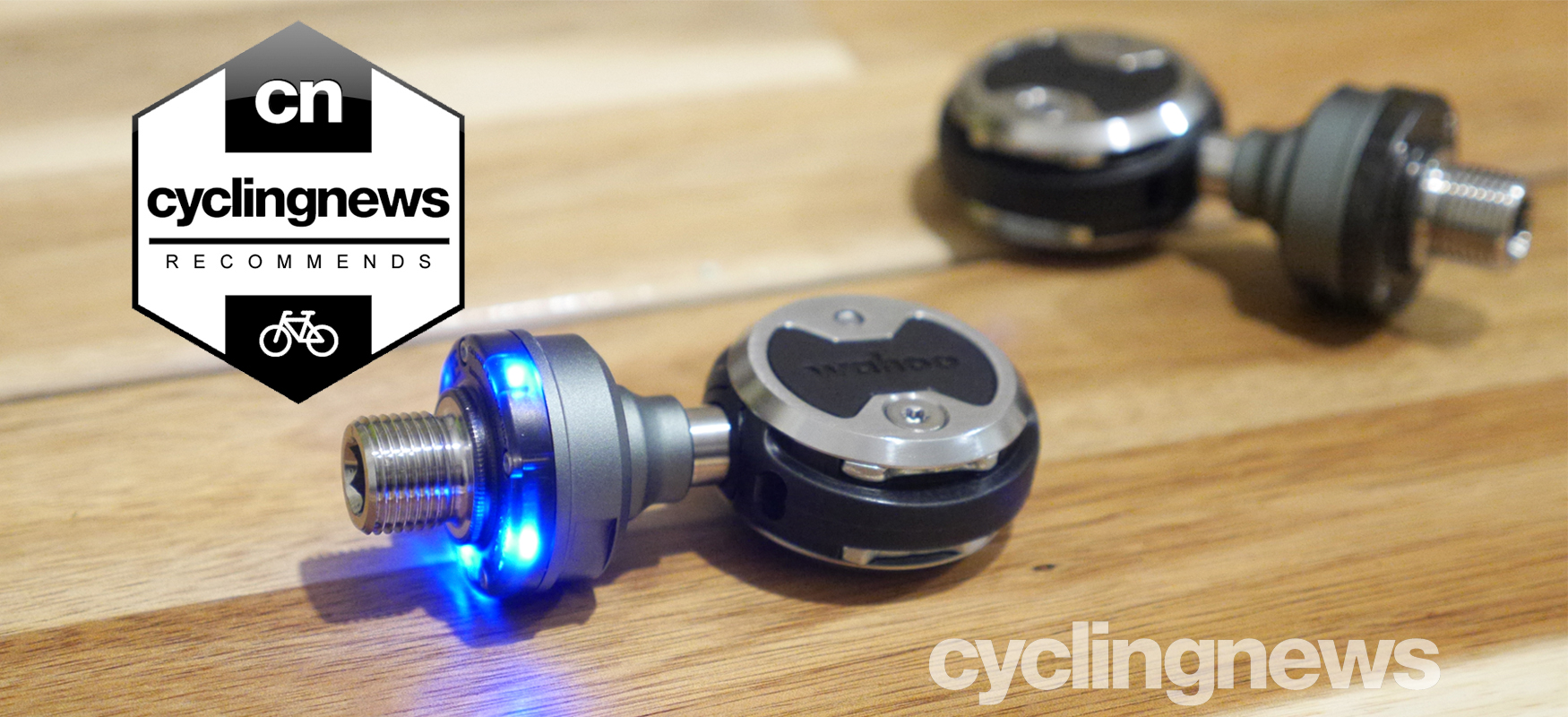Cyclingnews Verdict
Easy to set up, easy to charge, easy to maintain, and steady-effort power is great, but peak power readings seem off and Speedplay cleats won't be to everyone's taste
Pros
- +
Dual-sided clip in
- +
Dual-sided power reading
- +
Easily swapped from bike to bike
- +
Easy to set up and pair
- +
Accurate power measurement on steady efforts
Cons
- -
Speedplay clip-in feel won't be to everyone's taste
- -
Not the most competitively priced in the pedal-based power meter space
- -
Peak power reads low
You can trust Cyclingnews
The launch of the Wahoo Powrlink Zero pedals was a long time coming. As soon as Wahoo Fitness announced the acquisition of Speedplay in 2019, the cycling world expected the brand to use its expertise from the indoor cycling segment and integrate power meter technology into its newly acquired pedal platform. In March 2021, Wahoo relaunched the Speedplay range with four pedals, while also confirming everyone's expectations by teasing the forthcoming arrival of a power meter pedal.
Then, in February 2022, the brand unveiled the power meter version - the Powrlink Zero.
It's available in two guises: a single-sided version that measures power at the left leg and comes with a 'dummy' right pedal to complete the pair. And a dual-sided version that integrates the electronics into both pedals to measure the power at both legs.
We've been using the dual-sided option to see how they compare to the best power meters on the market, and now we're ready to share our thoughts.
Like any power meter, the Wahoo Powrlink Zero power meter pedals are aimed at cyclists who want to measure their power output when riding. Naturally, this will primarily be cyclists who are competitive, perhaps in training for an event or those who simply want to maximise the efficiency of their time on the bike by taking the guesswork out of their training. The nature of the power meter pedal means it's easily transferred between bikes, so it will also appeal to riders with more than one bike but who don't want to shell out on multiple power meters. It may also benefit travelling cyclists who will be able to pack them into a suitcase and then swap the pedals onto rentals or spin bikes - with permission, of course.
As I see it, Powrlink Zero's biggest competitors are the other pedal-based systems on the market: Garmin Rally and Favero Assioma, so below, I will run through the top-line specs for all three. However, one major selling point for the Powrlink Zero over other road cycling focussed pedal-based systems is the dual-sided entry of the Speedplay design, meaning you don't have to find the correct side of the pedal before you can clip in. Of course, there are plenty of other power meters on the market too. Some, such as crank based options from Stages, Pioneer and 4iiii will be around a third of the price of the dual-sided Powrlink Zero you see here, but if you want something that will be universally compatible with all bikes and easy to fit and remove, then pedal-based power meters are by far the most simple.
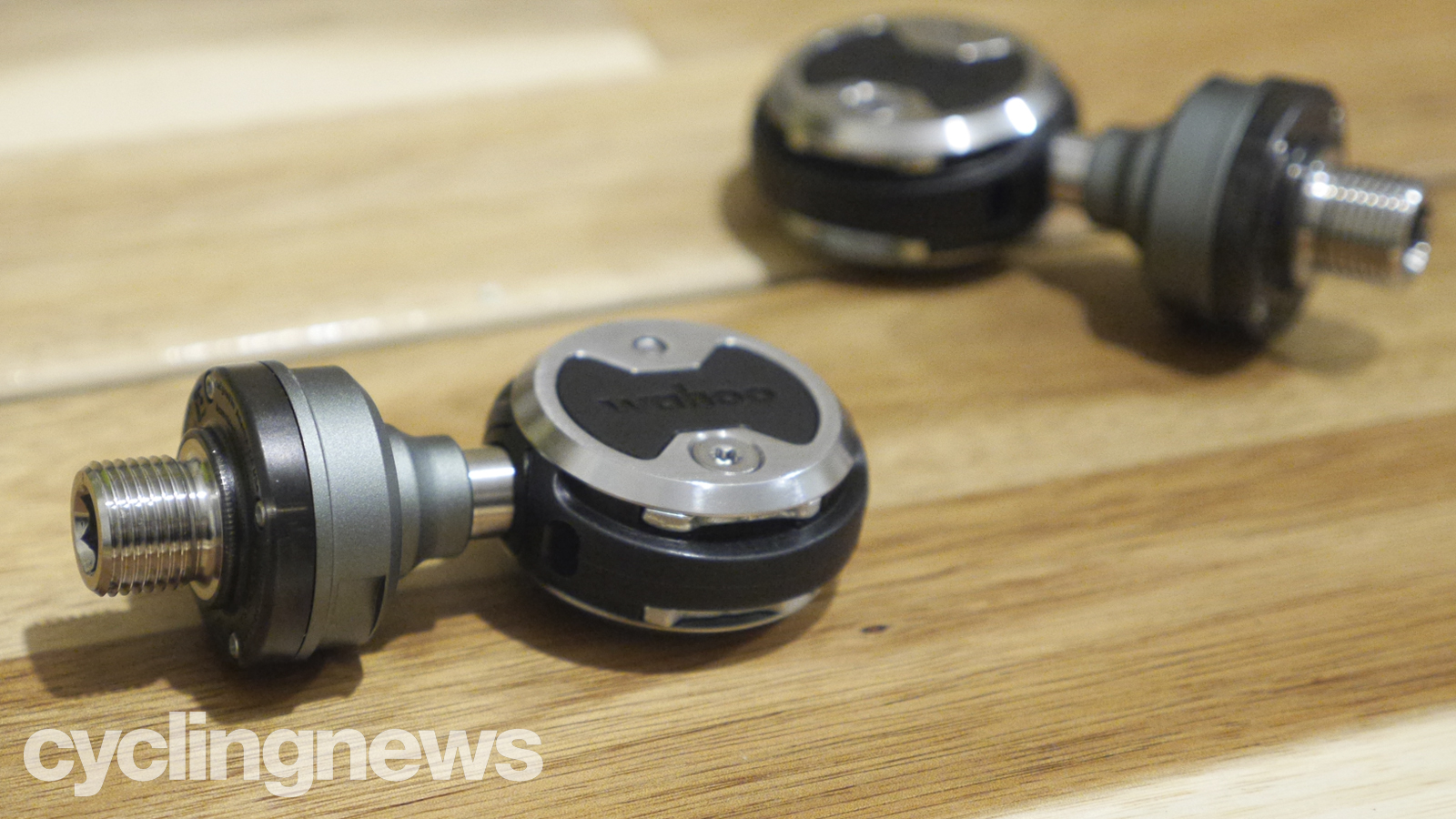
Design and aesthetics
The Powrlink Zero pedals follow a very similar design to Wahoo's existing Speedplay pedals. They most closely resemble the Zero model - hence the Powrlink Zero name - but there are a few differences. The most notable and obvious of which is the power pod at the base of the spindle. This measures 25mm in diameter and is designed to sit around 1mm proud of the crank arm when fitted. A washer is included to help achieve this on cranks with a recessed thread.
More subtle differences include a higher stack (13mm compared to 11.5mm) and a slightly longer axle (55mm compared to 53mm).
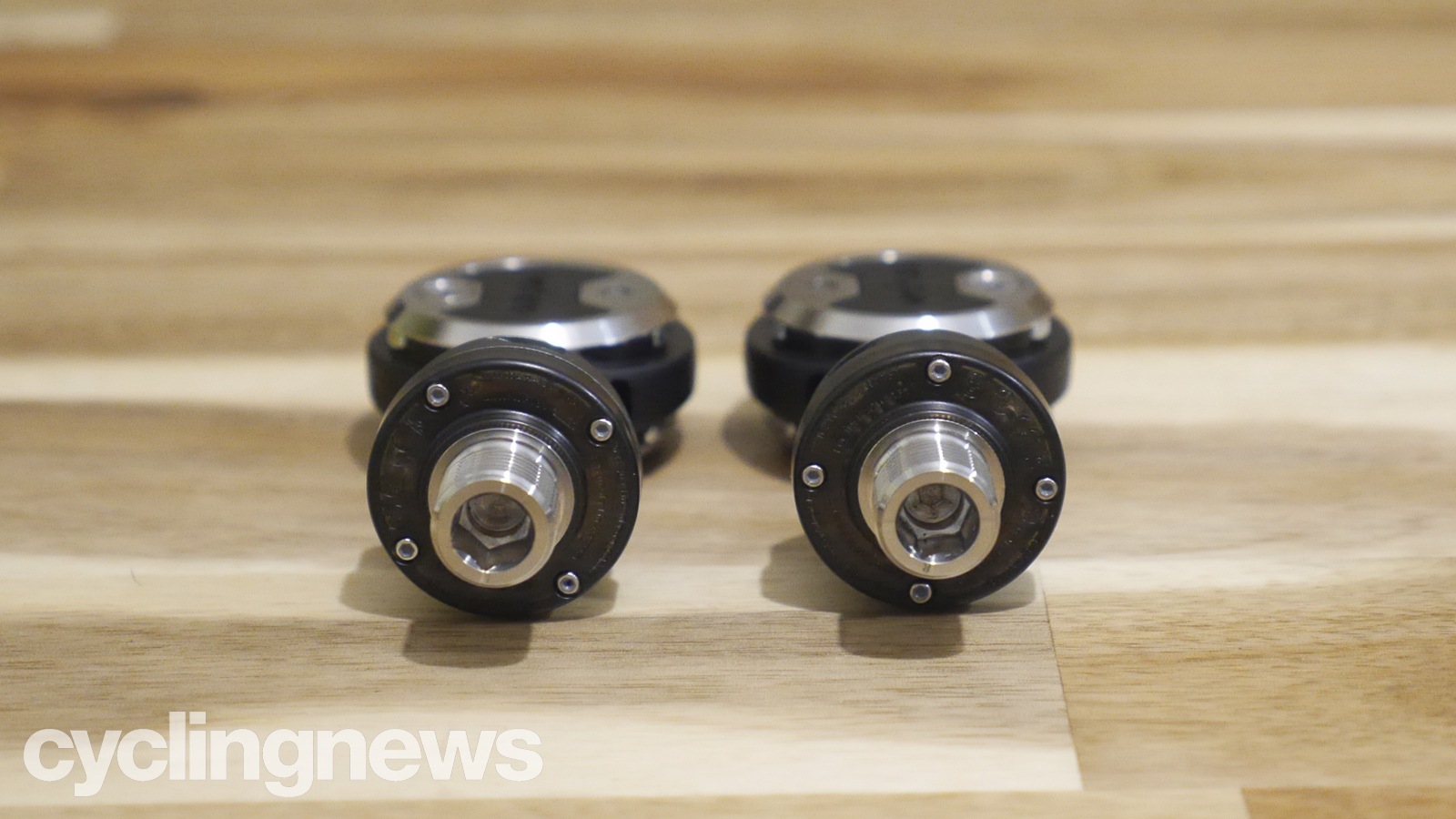
They are fitted using an 8mm hex key, just like most of the best road bike pedals, and when the 75-hour battery runs out, you don't need to remove them to charge them up. Two small electrical contacts are positioned on the outer edge of the pod on each pedal, and to charge them you'll simply fit the charging adaptor clip to the pod, then plug in your USB-C cable (which is included) to the clip. Two clips are included with the dual-sided option, as is a Y-shaped USB-C cable, so you can charge both simultaneously.
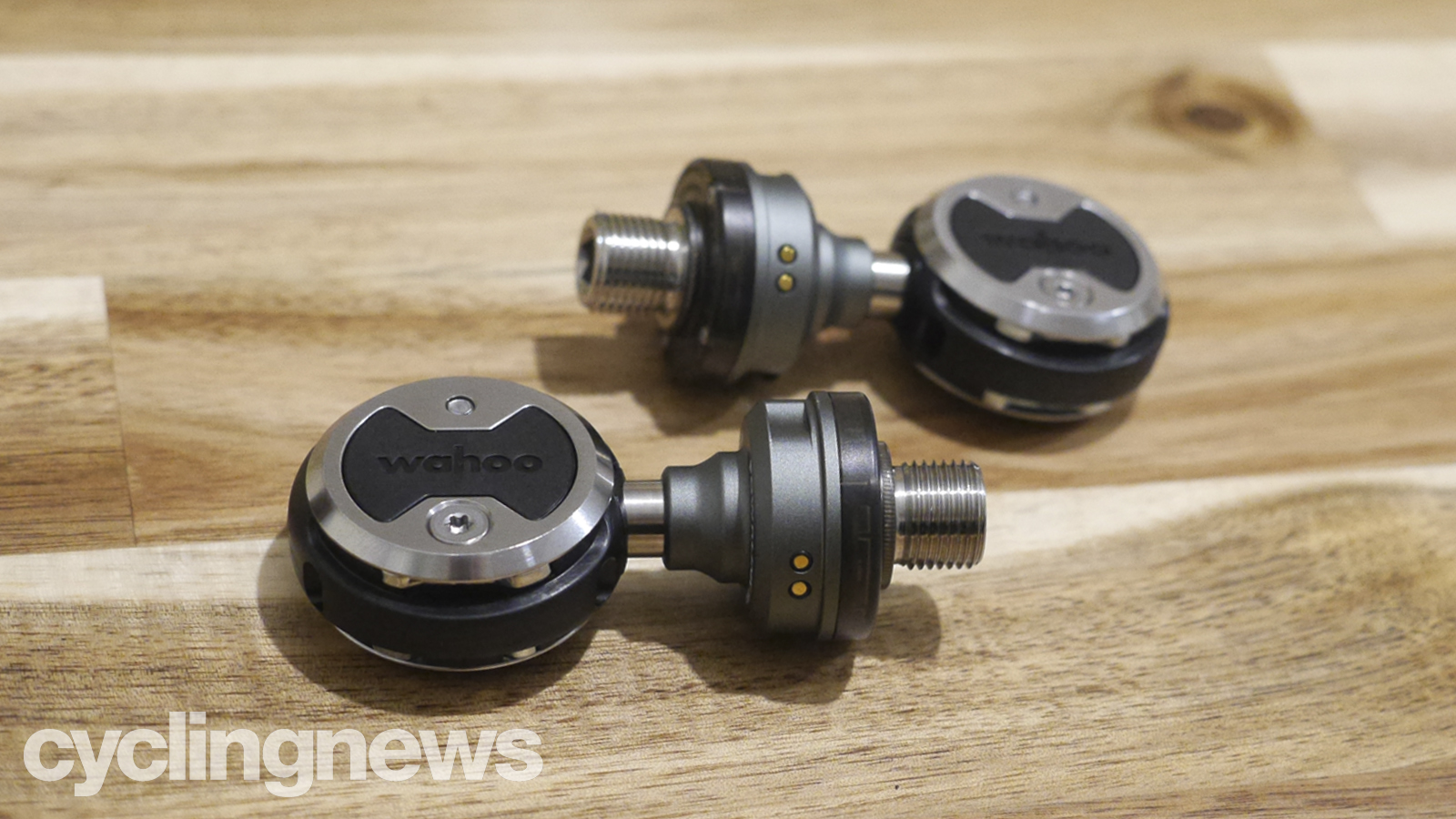
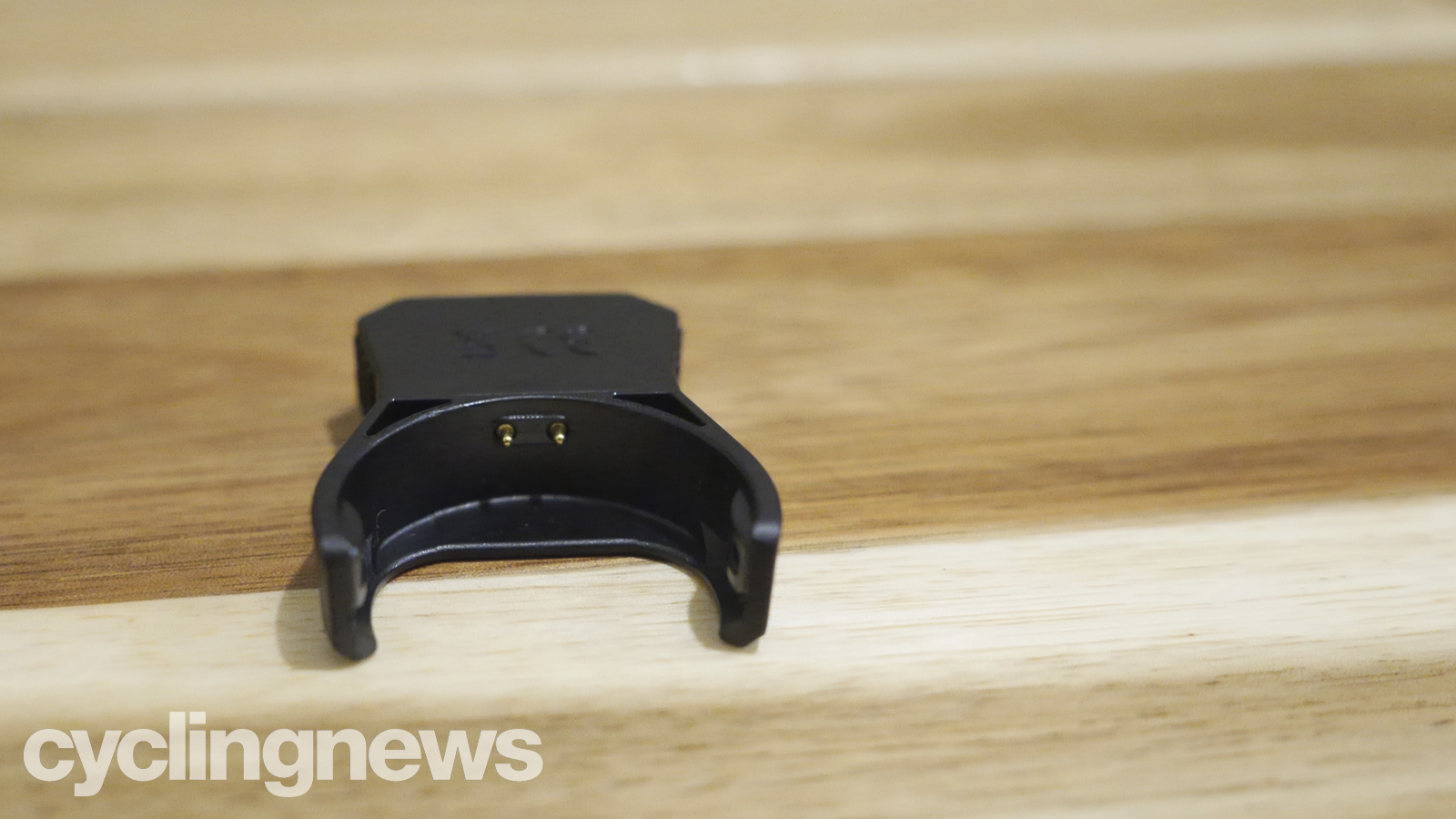
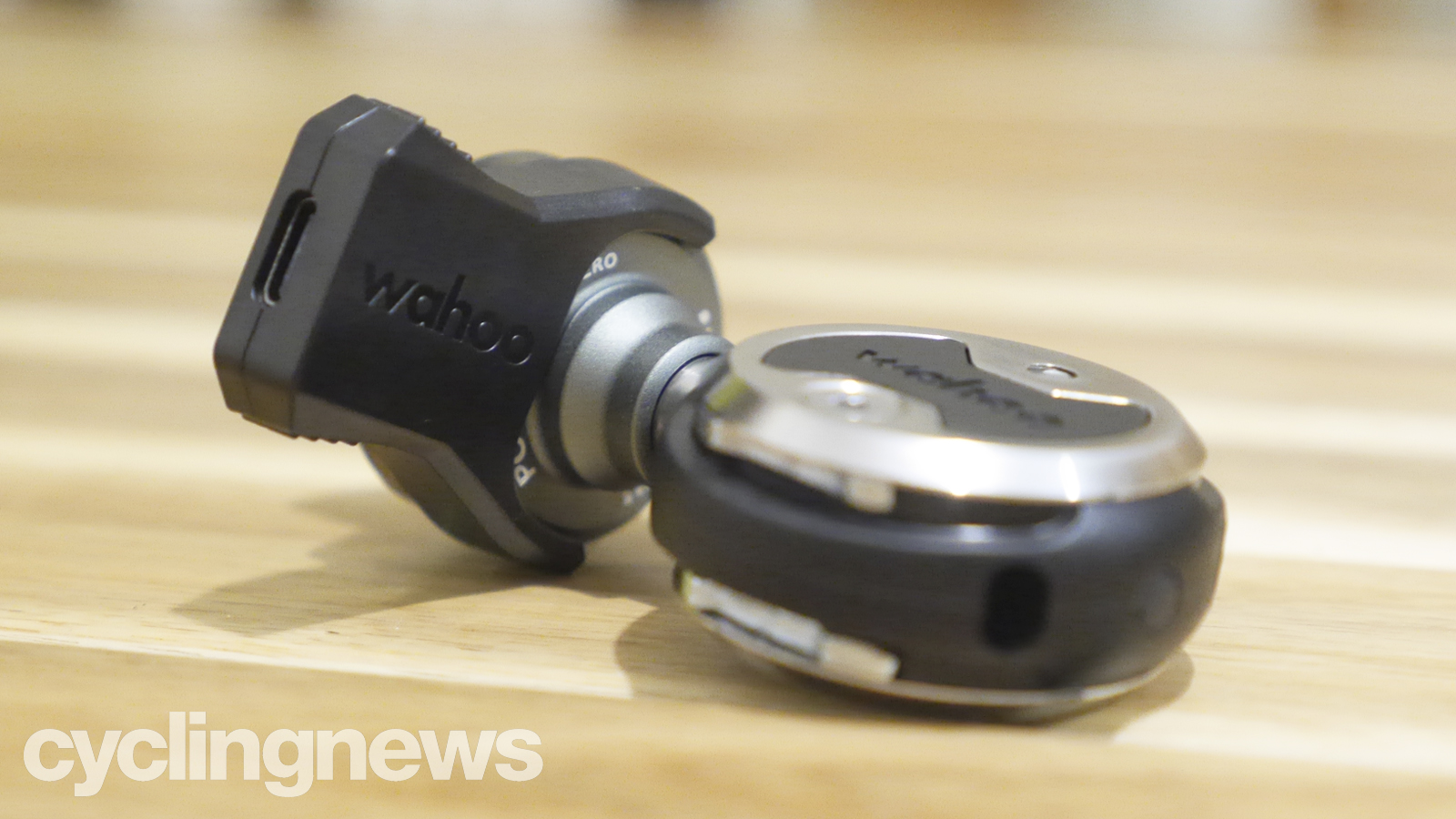
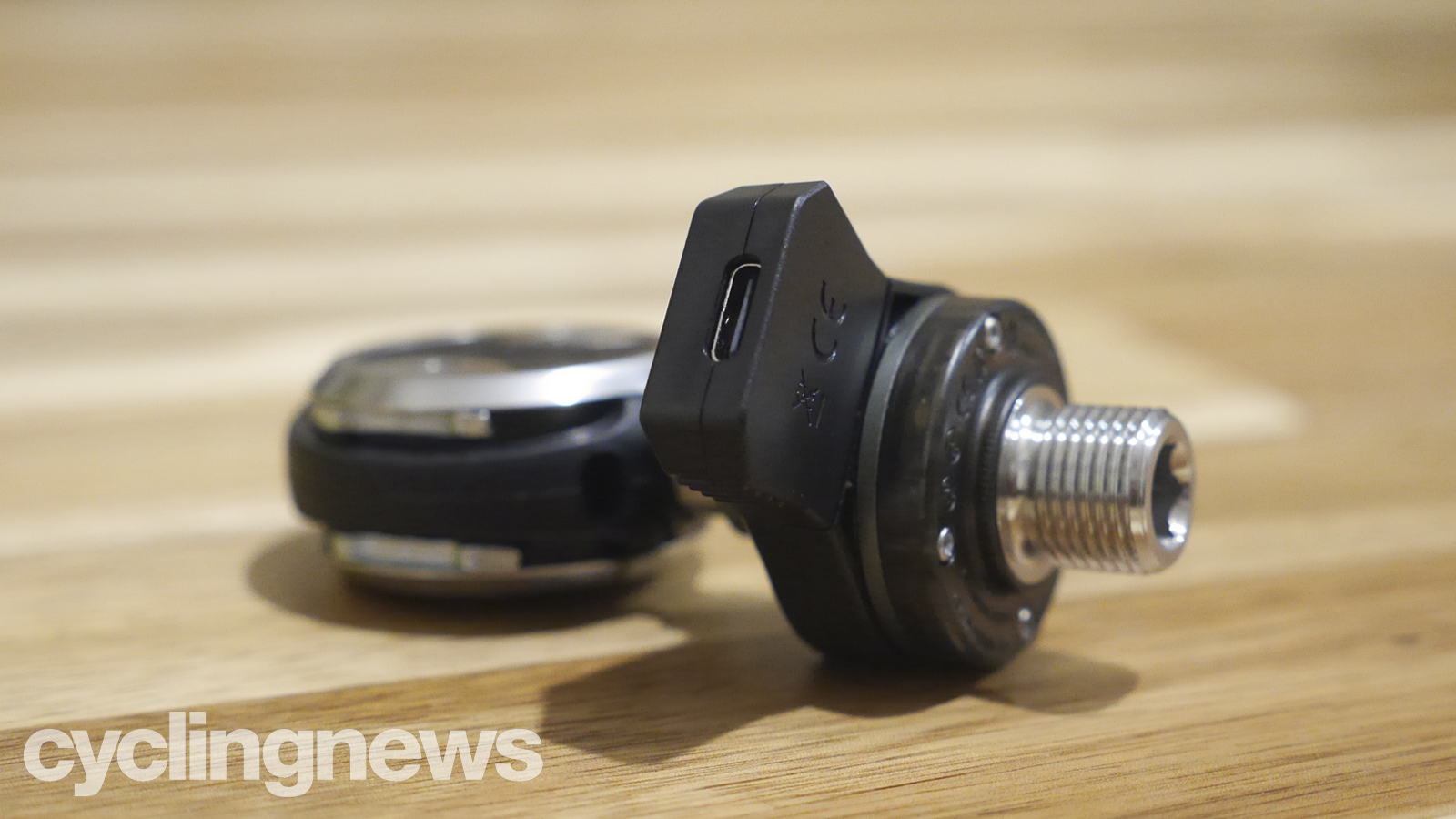
Five blue lights illuminate the pod upon wakeup, and these also indicate connection and remaining battery life, which is also displayed on the Wahoo companion app.
The pedals weigh 138g each, which is a healthy amount less than the Garmin and Favero options - at 160g and 150g respectively, but you'll need to bear in mind that the weight of the cleats offset this and then some. Wahoo Speedplay cleats weigh 81.5g each, while a Shimano SPD-SL cleat is 32g and a Look Keo cleat is 48g - all with fastenings.
Specifications
As touched on above, the main competitors for the Wahoo Powrlink Zero pedals are Garmin's Rally series and Favero's Assioma Duo and Uno. Therefore, rather than simply reciting the specifications of these pedals from Wahoo's spec sheet, I will also touch on the others so that you can get an understanding of how they compare.
Starting with price, the Wahoo Powrlink Zero pedals are priced at £849.99 / $999.99 for the dual-sided. For comparison, Garmin's Shimano SPD-SL and Look Keo pedals are £969.99 / $1,099.99 (the mountain bike SPD pedals are a little higher at £1,059.99 / $1,199.99) and Favero's Assioma Duo are a good amount cheaper at £699.00 / $759.00.
Powerlink Zero exclusively uses the Speedplay cleat. They come with the black 'standard' Speedplay cleats, but 'easy' cleats are available for those who want lighter-action clipping in and out. Garmin is available for Shimano SPD-SL, Look Keo, and even the gravel/MTB friendly Shimano SPD, and the power-meter internals can be swapped between the three, so if you regularly swap from road to gravel and mountain bike, you can take your power meter with you, without needing to own multiple power meters. Favero is designed for Look Keo although a Shimano version is available too.
Wahoo claims the Powrlink Zero is accurate to within one per cent, and battery life is claimed at 75-hours of ride time. Both competitors match the accuracy claim, but Garmin's battery is rated to last longer - at 120 hours - and Favero will run down at just 50 hours. However, while Wahoo and Favero are rechargeable, Garmin relies on replaceable LR44 / CR1 batteries, which will therefore incur a cost each time you replace them.
All three options are waterproof, as you'd expect from a power meter exposed to the elements. Wahoo and Garmin are IPX7 rated, while Favero is IP67 rated.
IP stands for Ingress Protection. The first subsequent digit represents solid particles such as dust or mud, while the second digit relates to water. 6 is the highest rating for dust protection, meaning Favero's Assioma is totally sealed to dust. The 'X' for the others means that these power meters weren't actually tested for dust ingress. It doesn't mean they're worse, just that they're not tested. All three share the same '7' rating for waterproofing, which means they can all withstand being submerged at a depth of 1m for 30 minutes without letting in water.
| Header Cell - Column 0 | Wahoo Powrlink Zero Single / Dual | Garmin Rally RS100 / RS200 | Favero Assioma Uno / Duo |
|---|---|---|---|
| Price GBP | £549.99 / £849.99 | £579.99 / £969.99 | £449.00 / £699.00 |
| Price USD | $649.99 / $999.99 | $649.99 / $1,099.99 | $499.00 / $759.00 |
| Cleat compatibility | Speedplay | Look Keo, SPD-SL, SPD (cost more) | Look Keo (SPD-SL also available) |
| Claimed accuracy | +/- 1% | +/- 1% | +/- 1% |
| Battery life (hours) | 75+ | 120 | 50 |
| Rechargeable | Yes | No | Yes |
| Weight (dual-sided, pair) | 276g | 320g | 300g |
| Water resistance | IPX7 | IPX7 | IP67 |
Are Wahoo Powrlink Zero pedals any good?
Given the pedal-based nature of the Powrlink Zero, the installation is literally as simple as fitting a pair of pedals and fitting the cleats to my shoes. Both were straightforward, but it's worth stating that the cleat process takes a good while longer than Shimano or Look cleats. There's more to think about, and the cleat cover takes some brute force to get into place. (Pro tip: put the cleat cover on a radiator for 10 minutes to warm and soften the material to help it stretch into place).
From here, my next step was to pair the pedals with my Wahoo Elemnt Bolt, calibrate, and go. However, after some lower power readings, I spoke with Wahoo who suggested I follow the setup process within the app. Through this setup wizard, Wahoo asks you to perform a standing start (a short sprint from standing) to bed in the pedals before calibrating. This isn't something I've seen before, but Wahoo claim it's common, and it seemed to make a difference. It's recommended that you do this whenever fitting the pedals to a new bike.
Wahoo products are widely renowned for being immensely easy to use, thanks in large part to the companion app, and the rest of the setup process lived up to these high standards. I tested pairing them with various cycling computers, my smartphone and a laptop via both Bluetooth and ANT+ and they were found immediately in all cases. This is a small thing, but an issue that plagues so many cycling sensors.
How accurate are Wahoo Powerlink Zero pedals?
As mentioned above, Wahoo claims that its Powrlink Zero pedals are accurate to within a one per cent variance. This means that if you were riding at an exact wattage of 300 watts, the Powrlink Zero pedals promise to read somewhere between 297 and 303 watts.
As is commonplace in a power meter test, for this review, I have pitted them against two alternative sources of power measurement - the Wahoo Kickr 18 and Specialized S-Works Power Cranks - to see how they compare. My findings are mixed.
The responsiveness is good, meaning that when power increases or decreases, so does the number on the computer receiving it. The graphs below show the pickup and dropoff for all three power meters was as accurate as each other.
Steady state power is also fantastically accurate in comparison to the two control power meters.
However, peak power readings are almost consistently low in comparison.
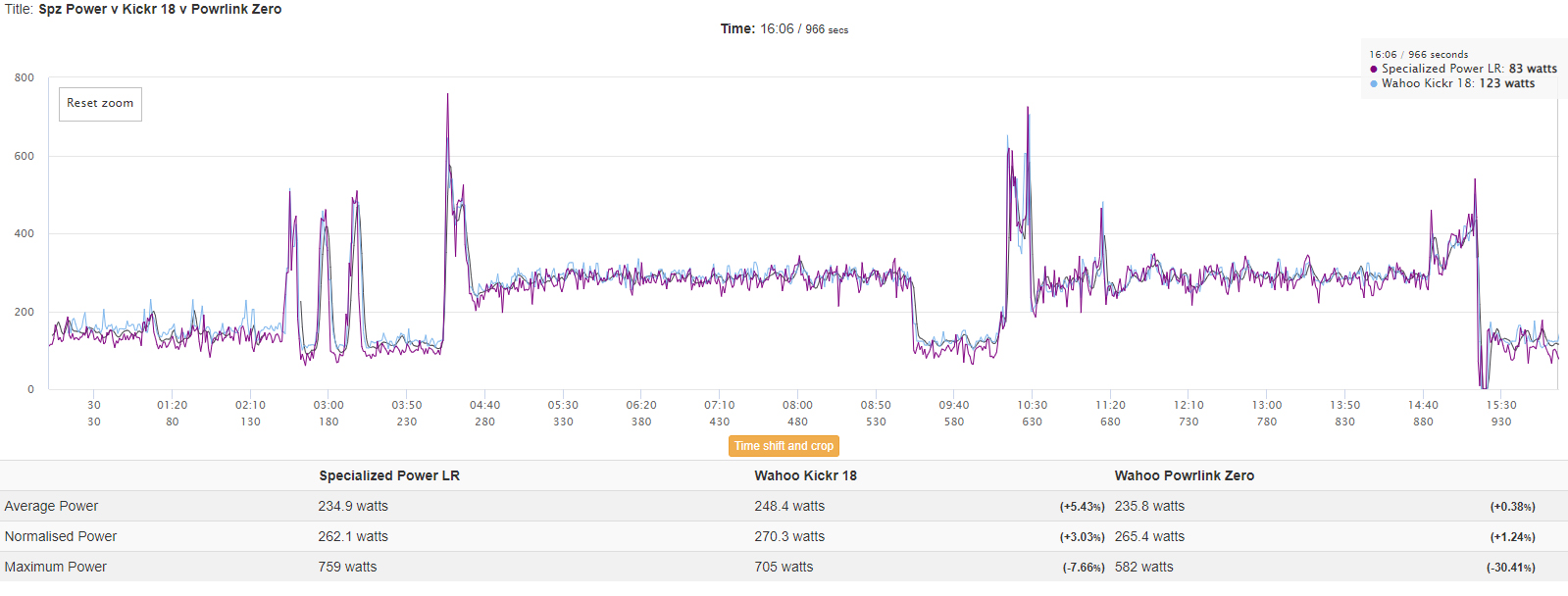
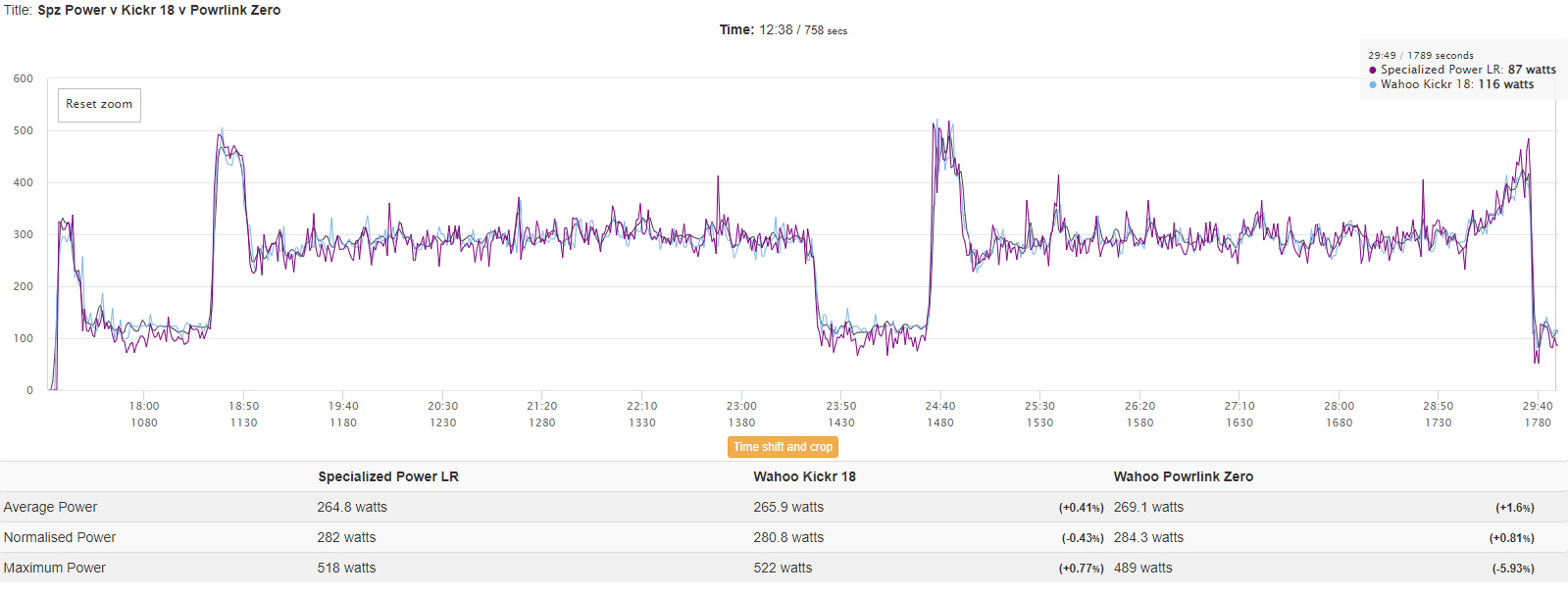
In this first ride, it's clear that steady efforts are great. The three power lines track really consistently against each other, suggesting that they are all reading accurately and similarly.
However, the number at the bottom right raised a red flag. The maximum power read by the Wahoo Powrlink Zero was 30 per cent lower than that of the Kickr. That is made slightly more clear in the images below, where I've zoomed into two of the power spikes.
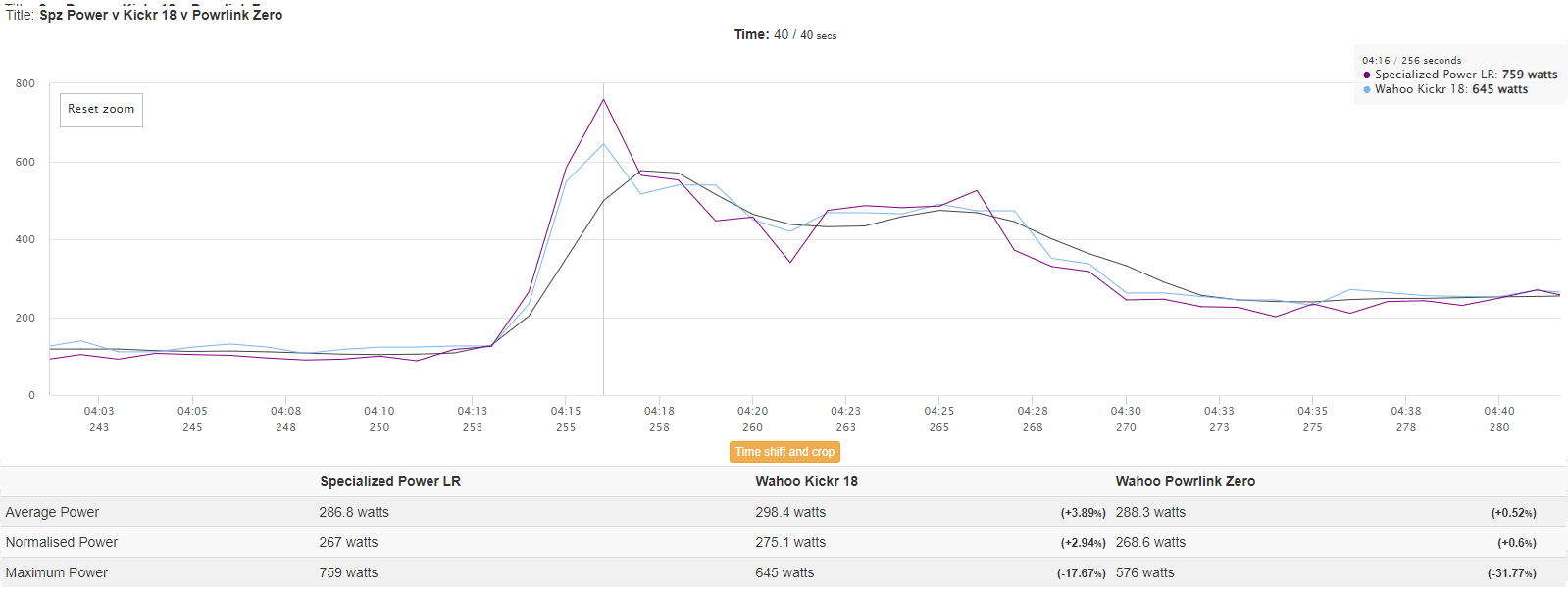
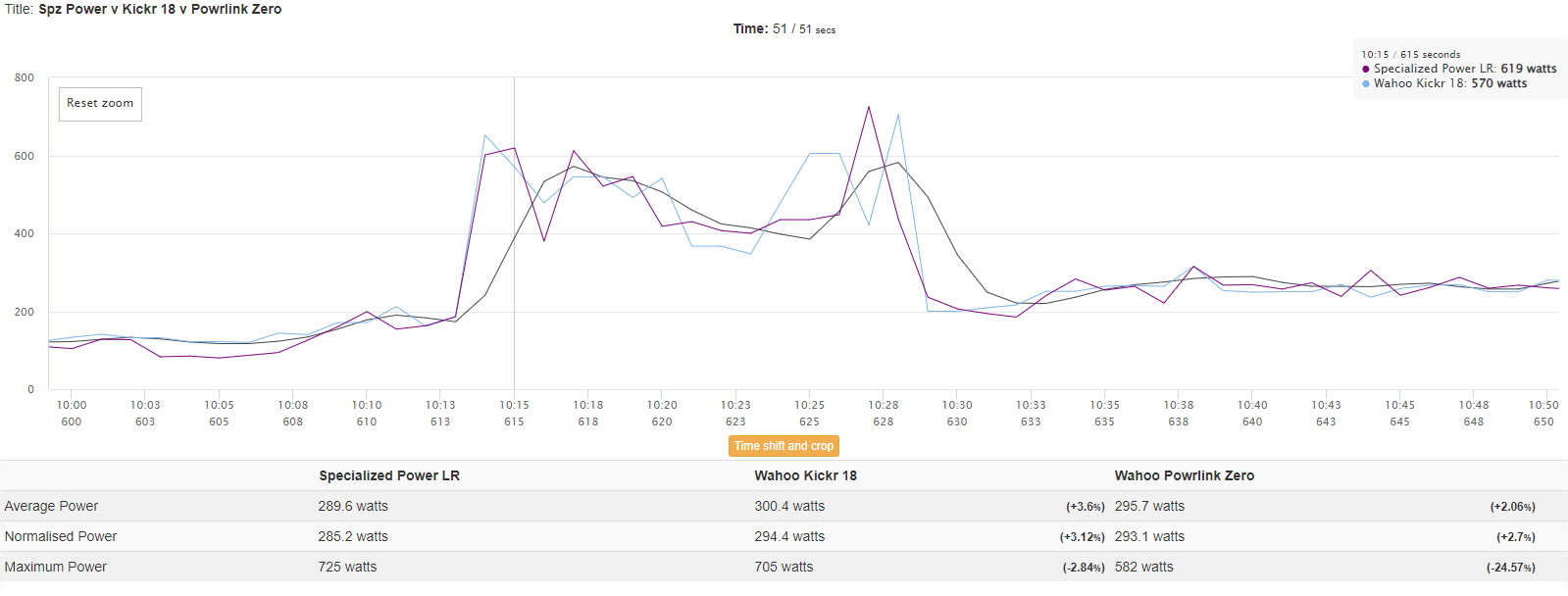
As shown in the images above, the way that Powrlink Zero responds to surges appears to be smoother. At this point, I asked Wahoo whether or not the Powrlink Zero actively smoothed out power readings, the answer was no.
Unfortunately, this wasn't an anomaly. I have spent the better part of two weeks doing sprint-based training sessions in order to see how the Powrlink Zero responds, and for almost every power spike on each ride, the maximum power reading from Powrlink Zero was below that of the others.
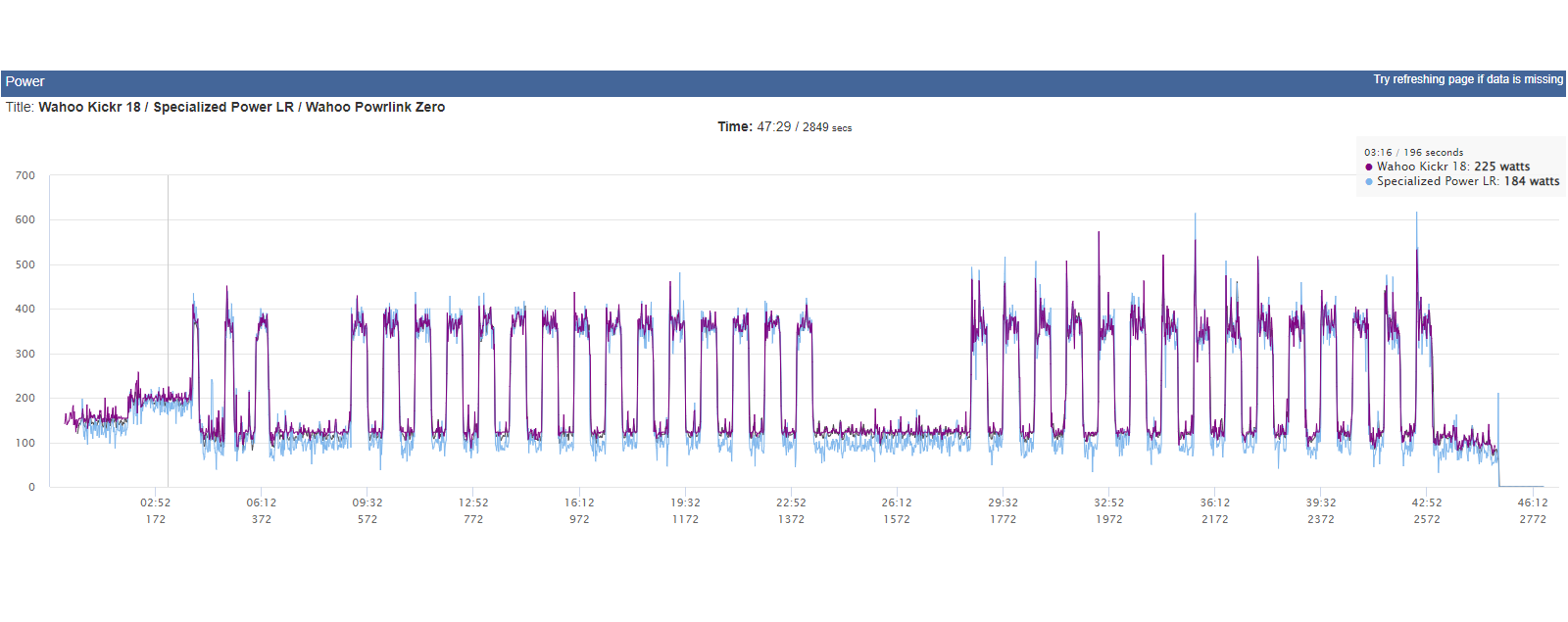
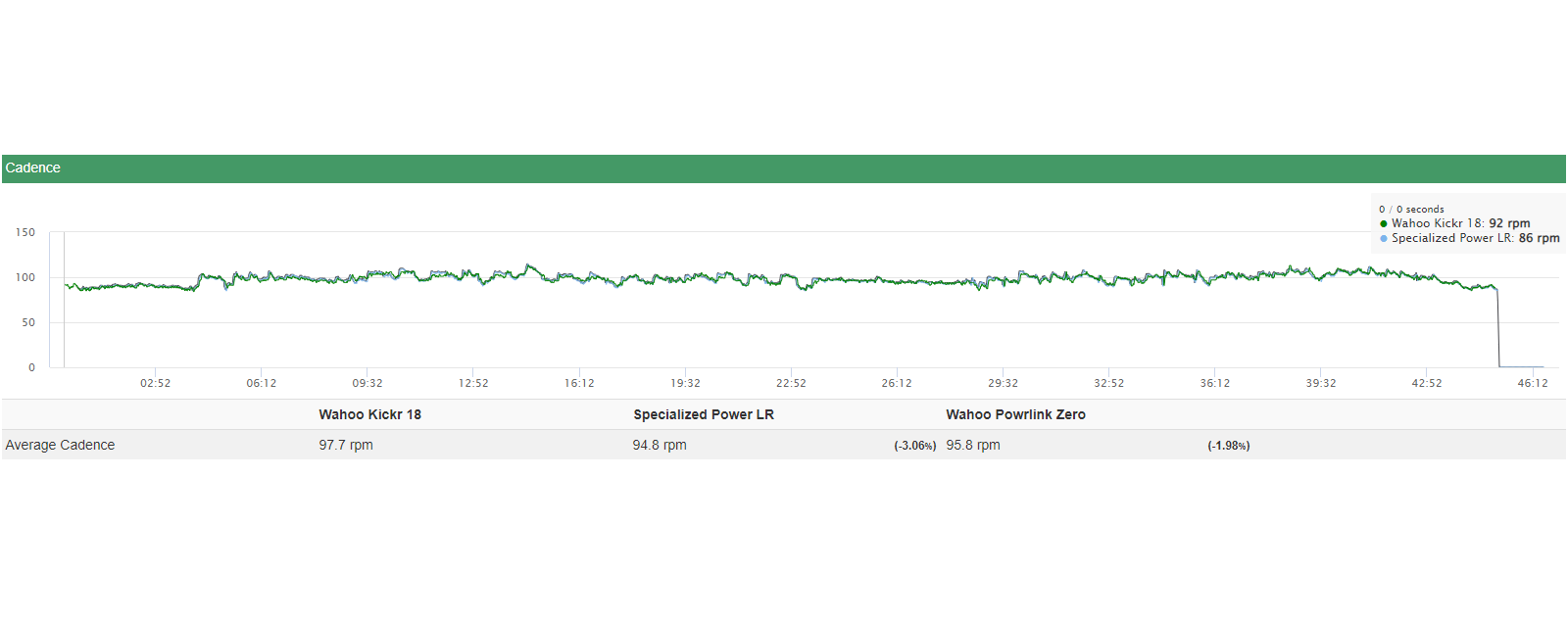
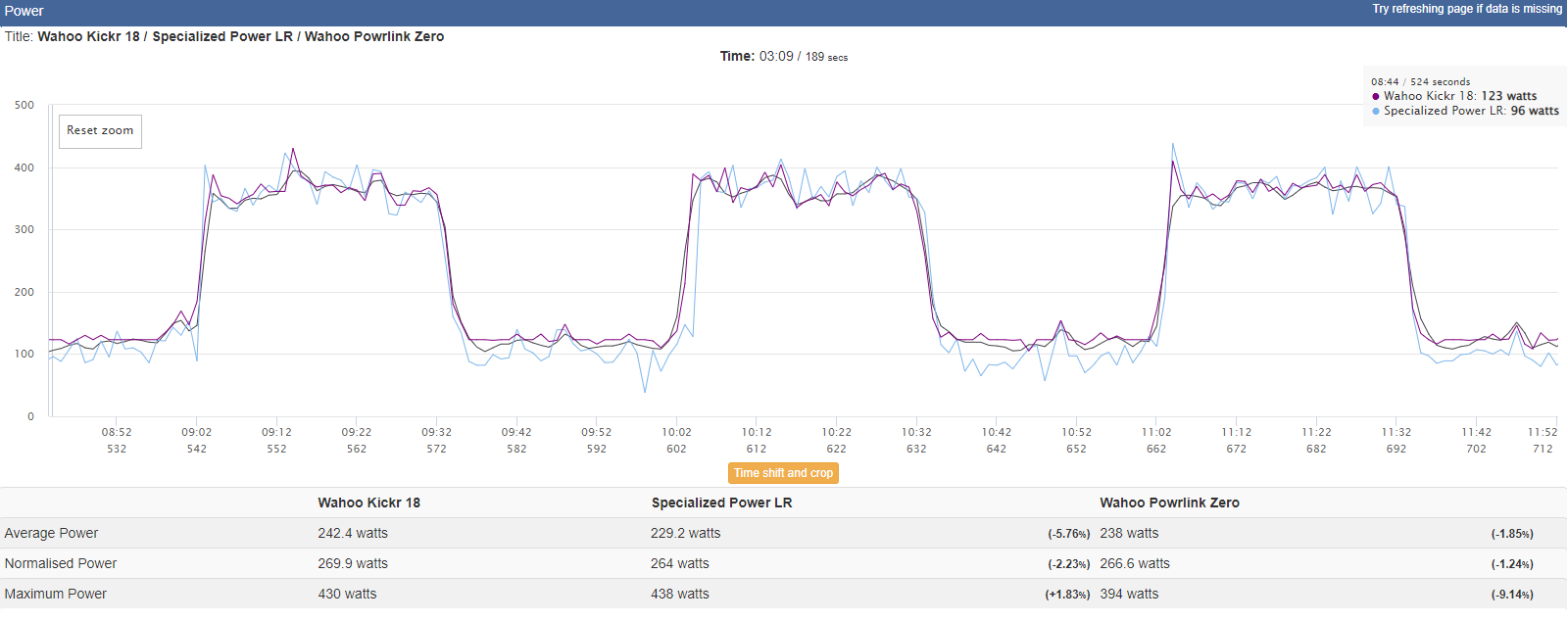
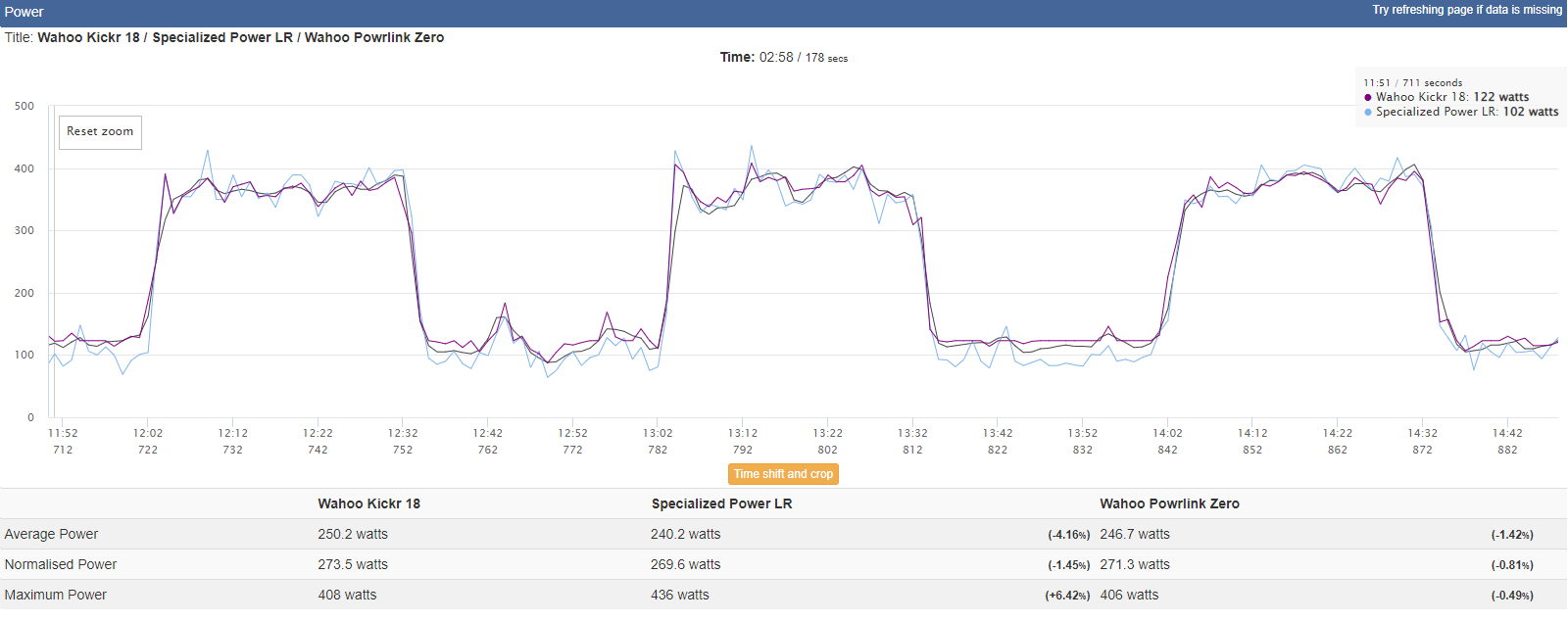
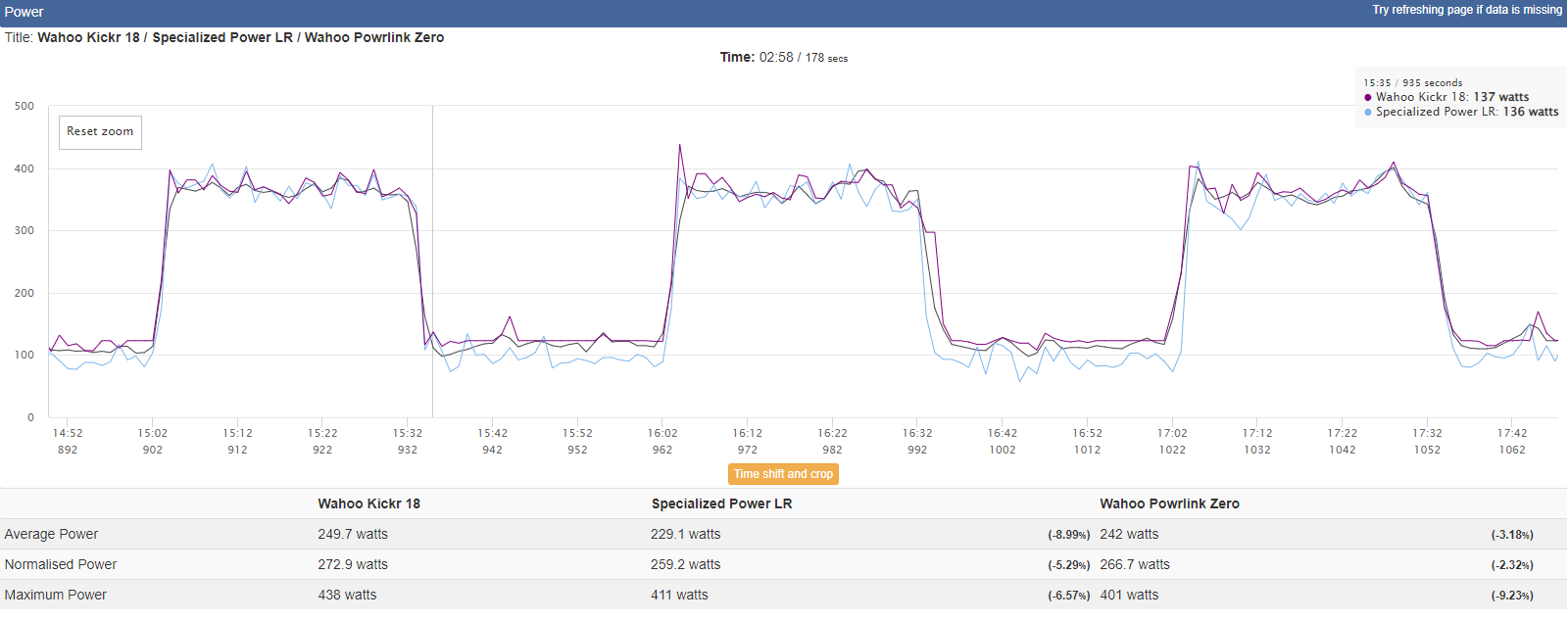
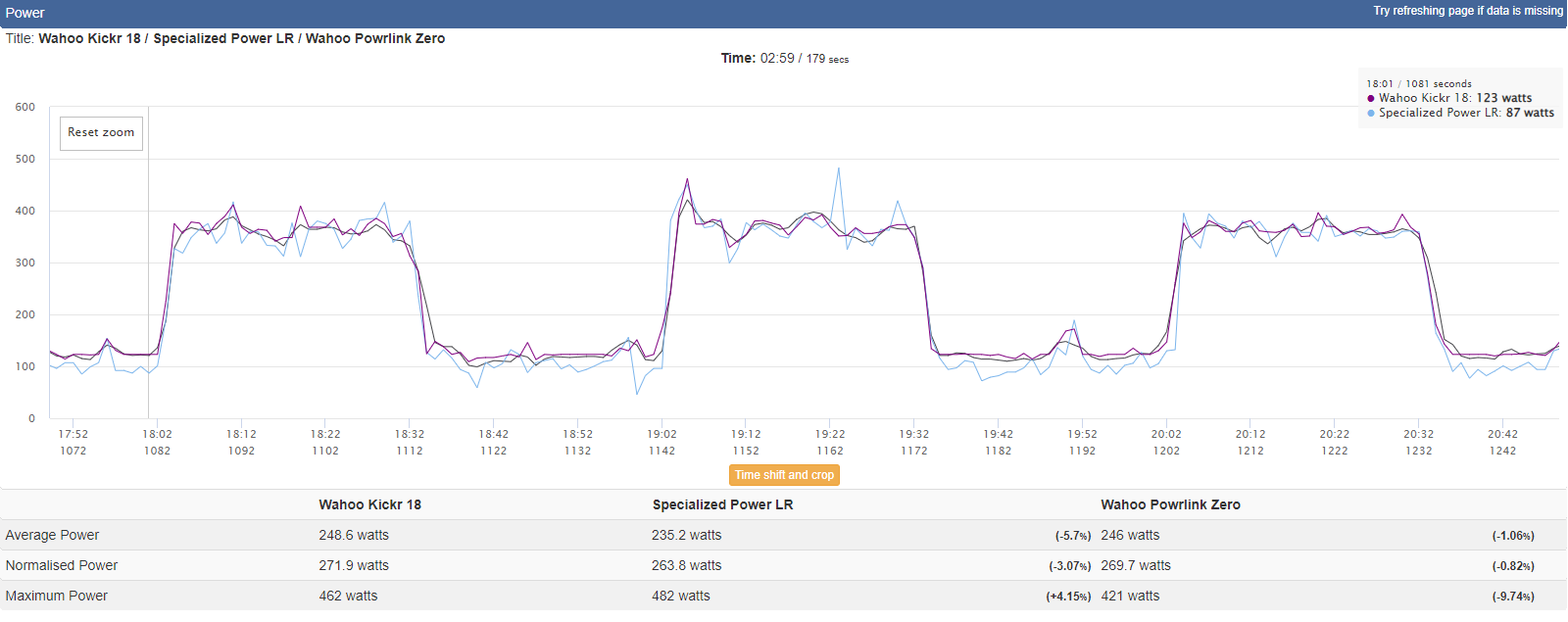
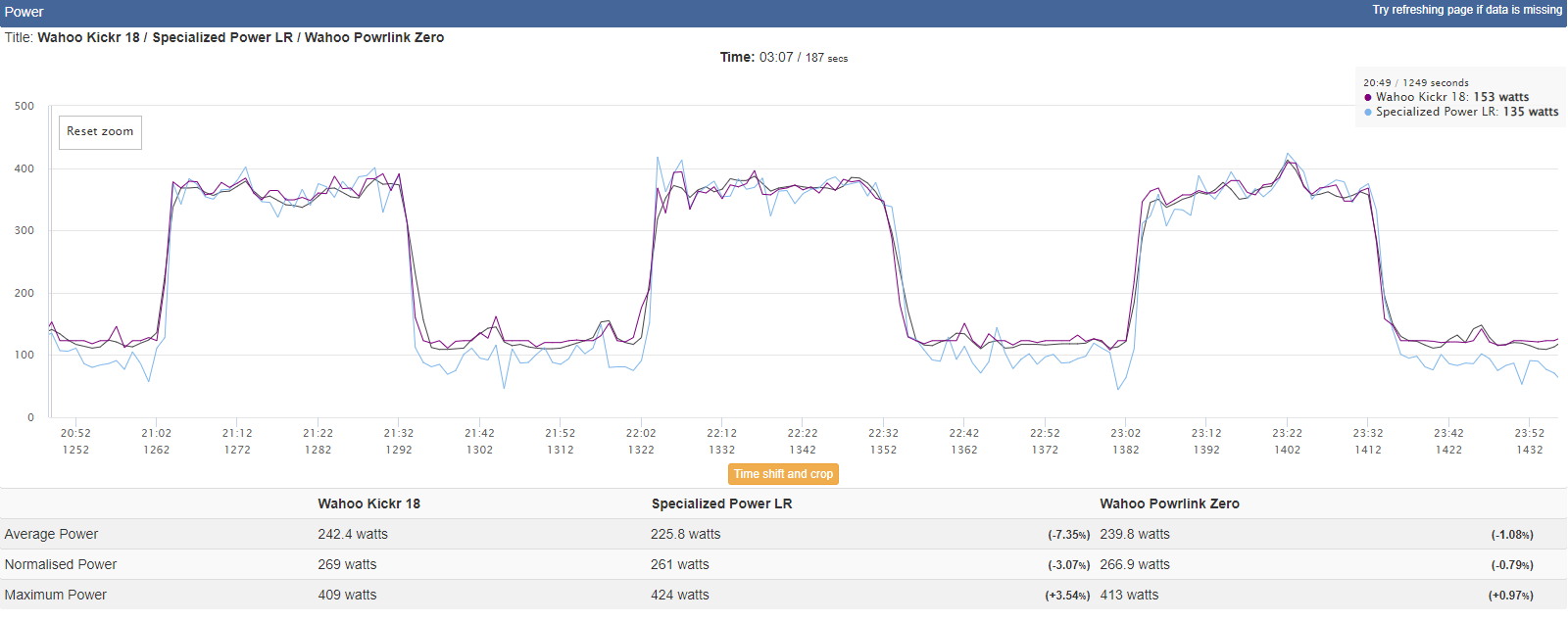
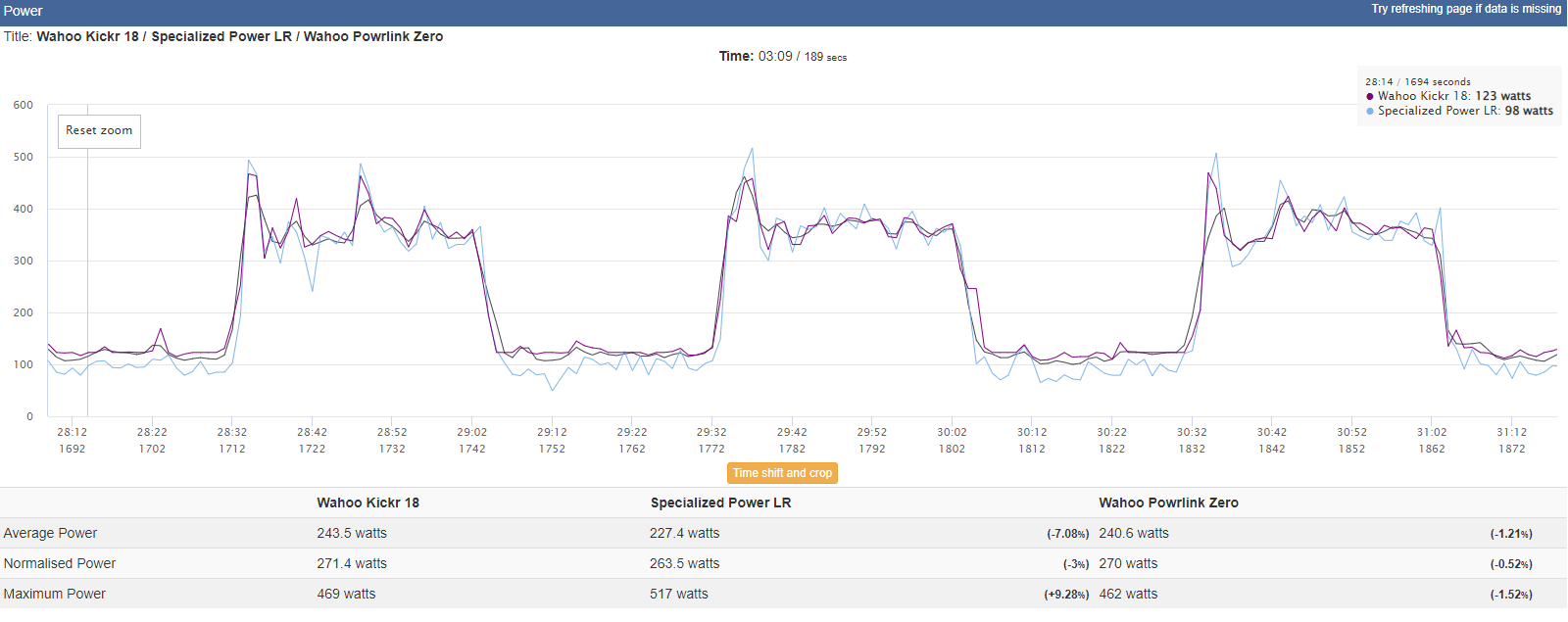
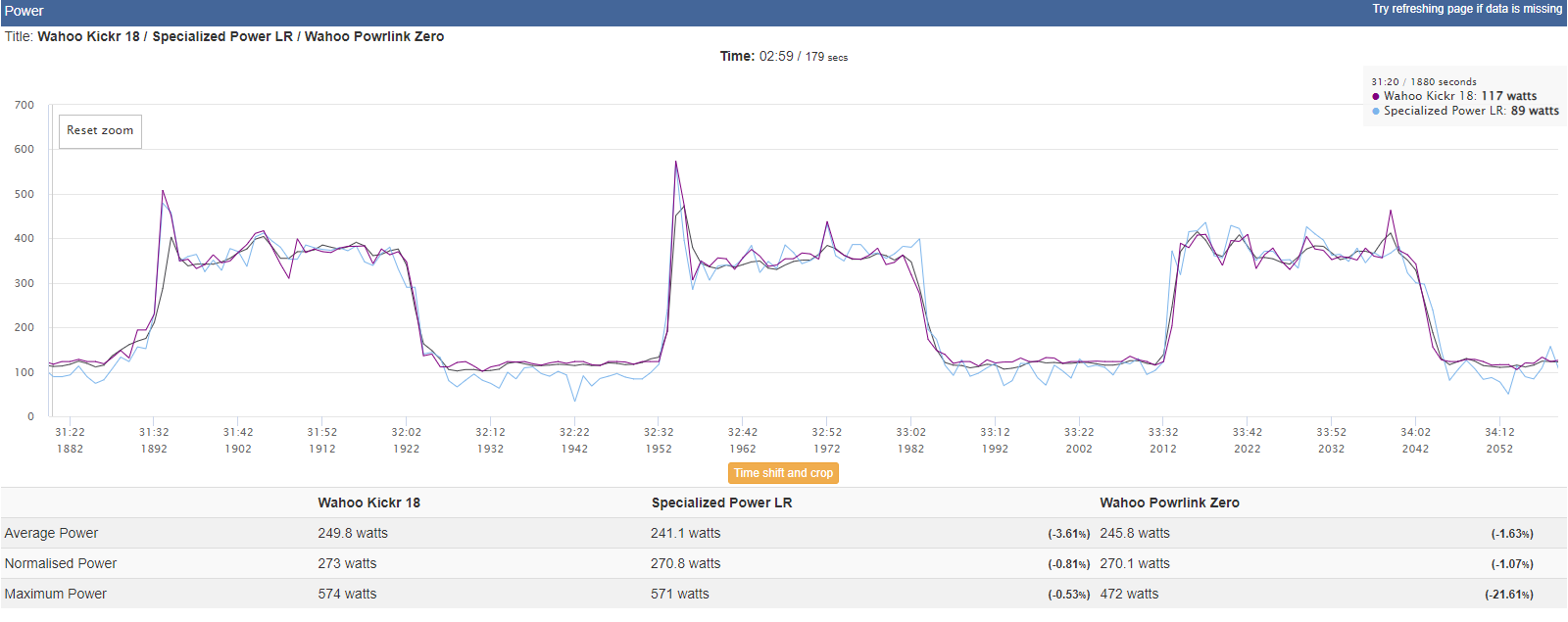
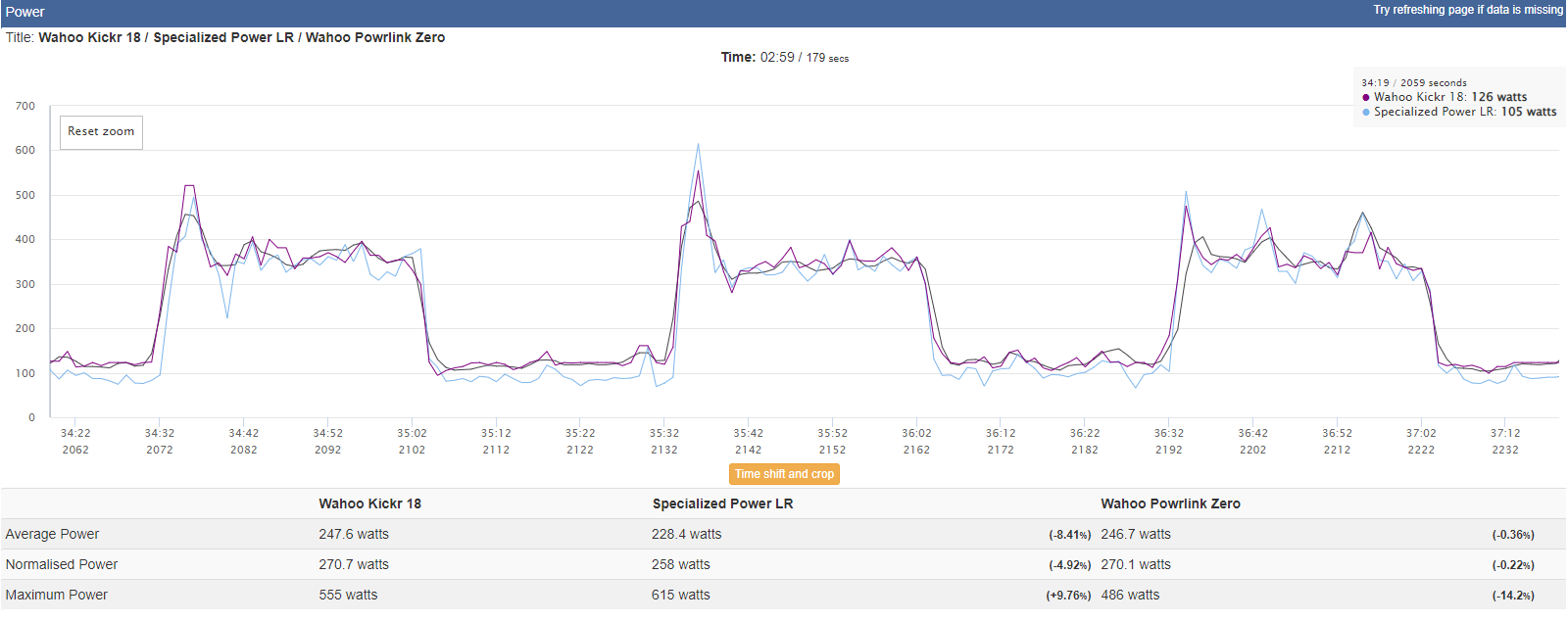
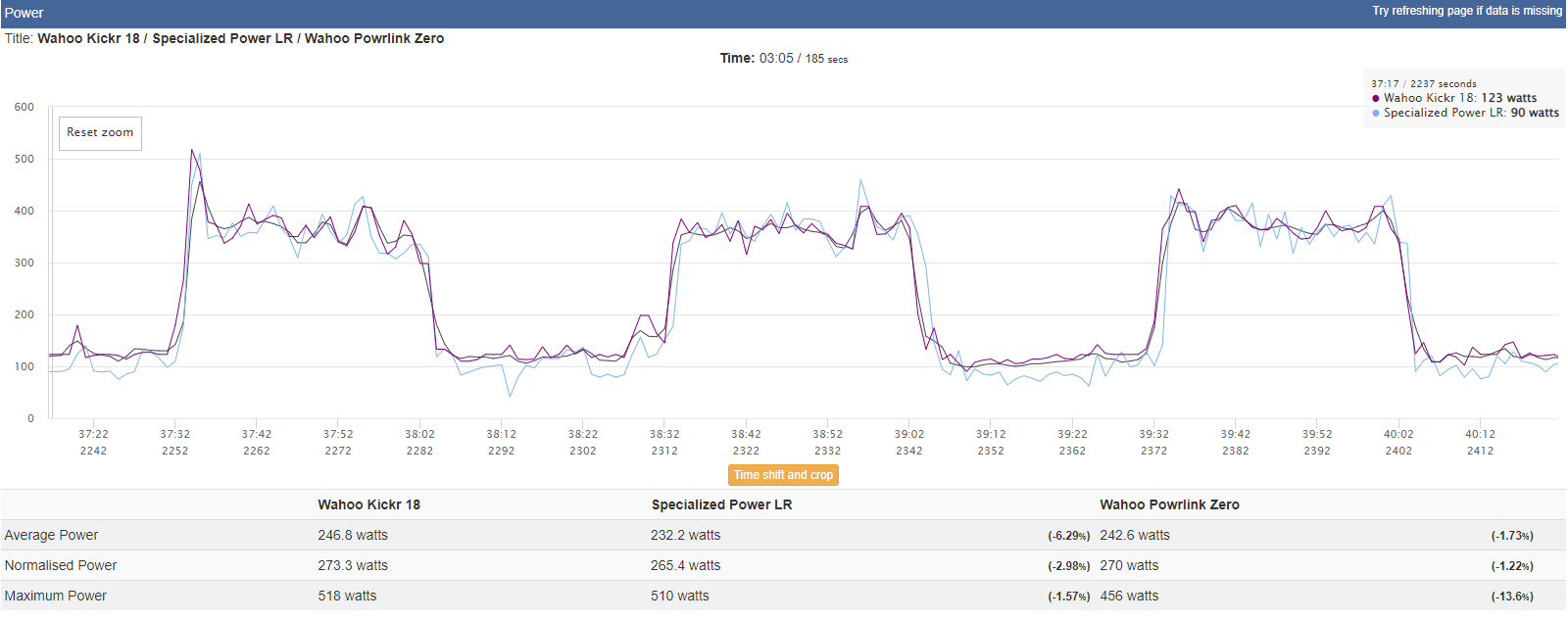
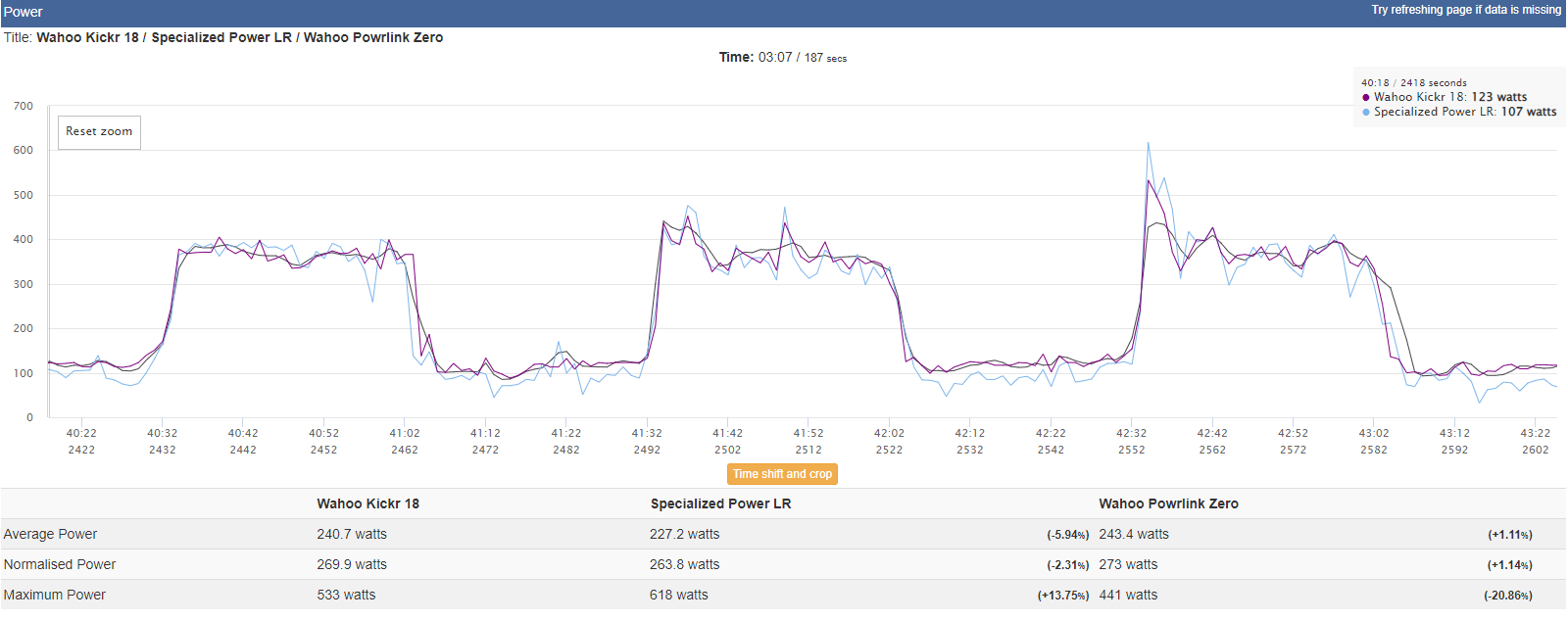
The gallery above depicts a 45 minute workout that consisted of 30 x 30-second sprints. In almost every sprint, the maximum power reading on the Powrlink Zero pedals is below that of the two other 'control' power meters.
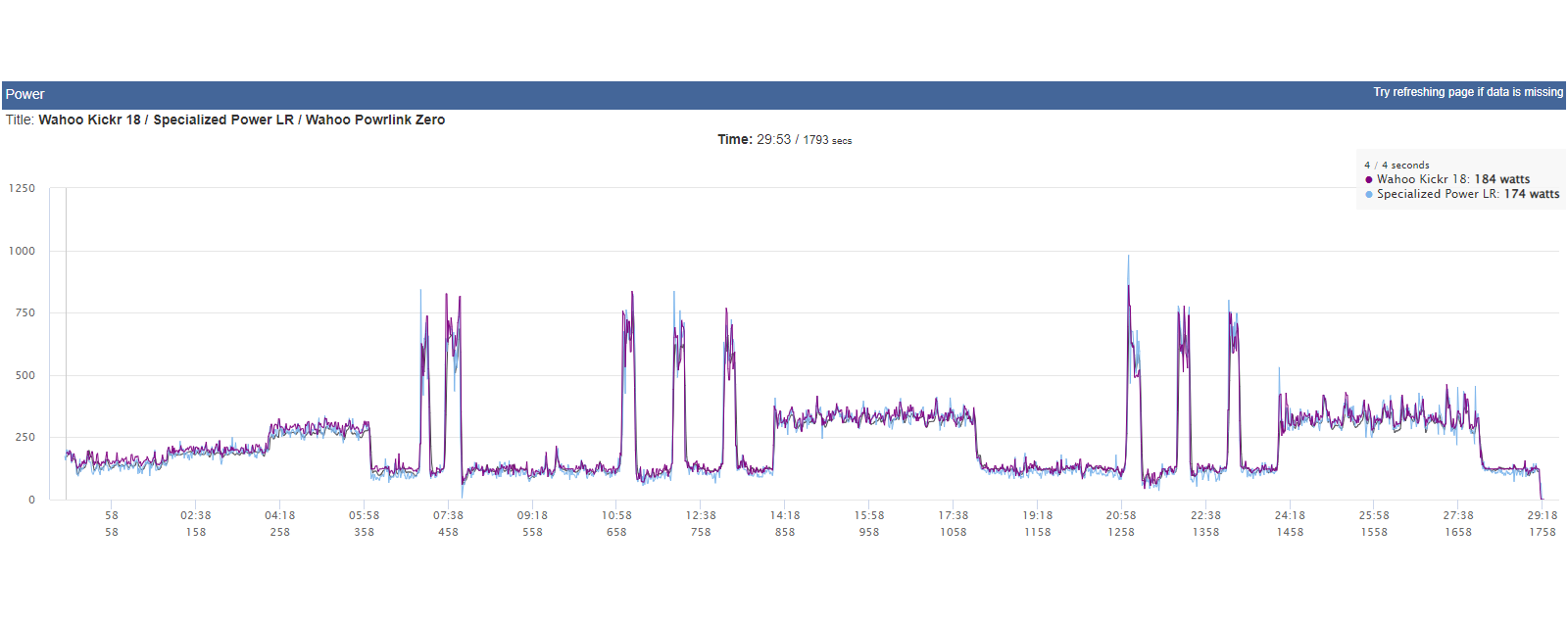
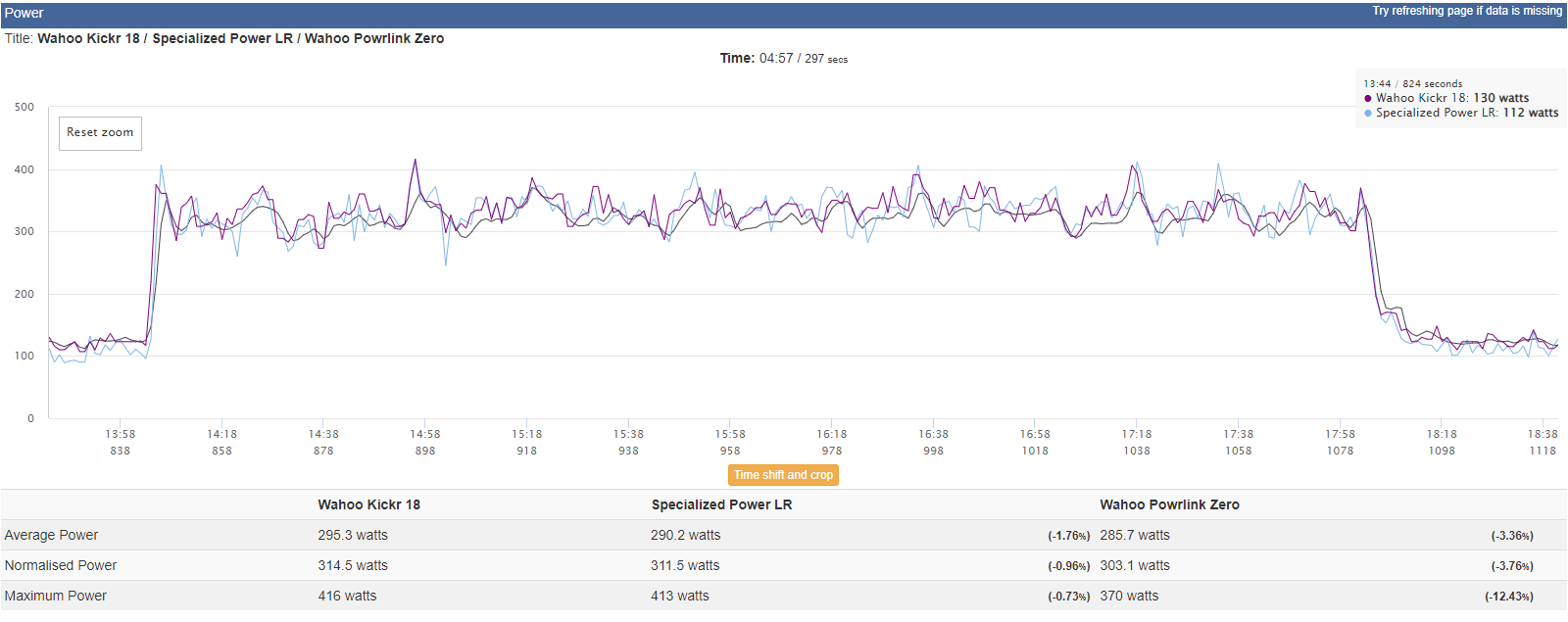
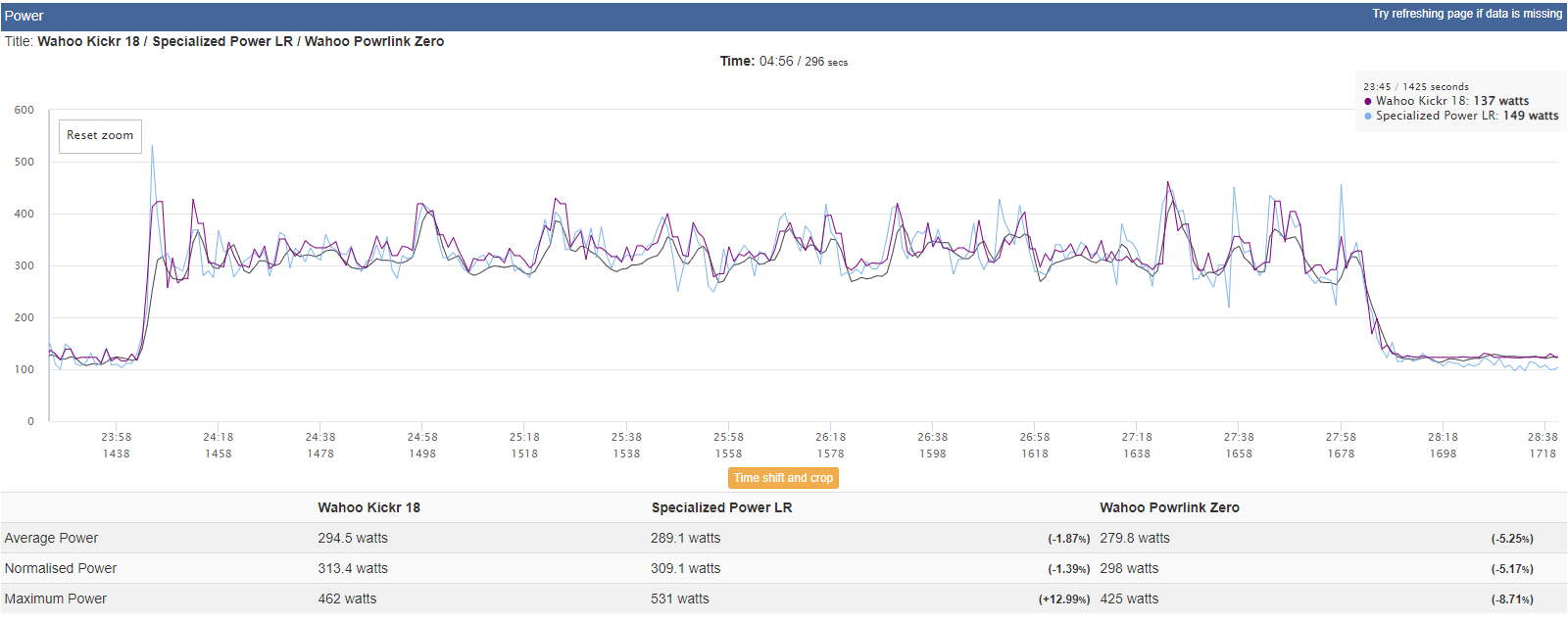
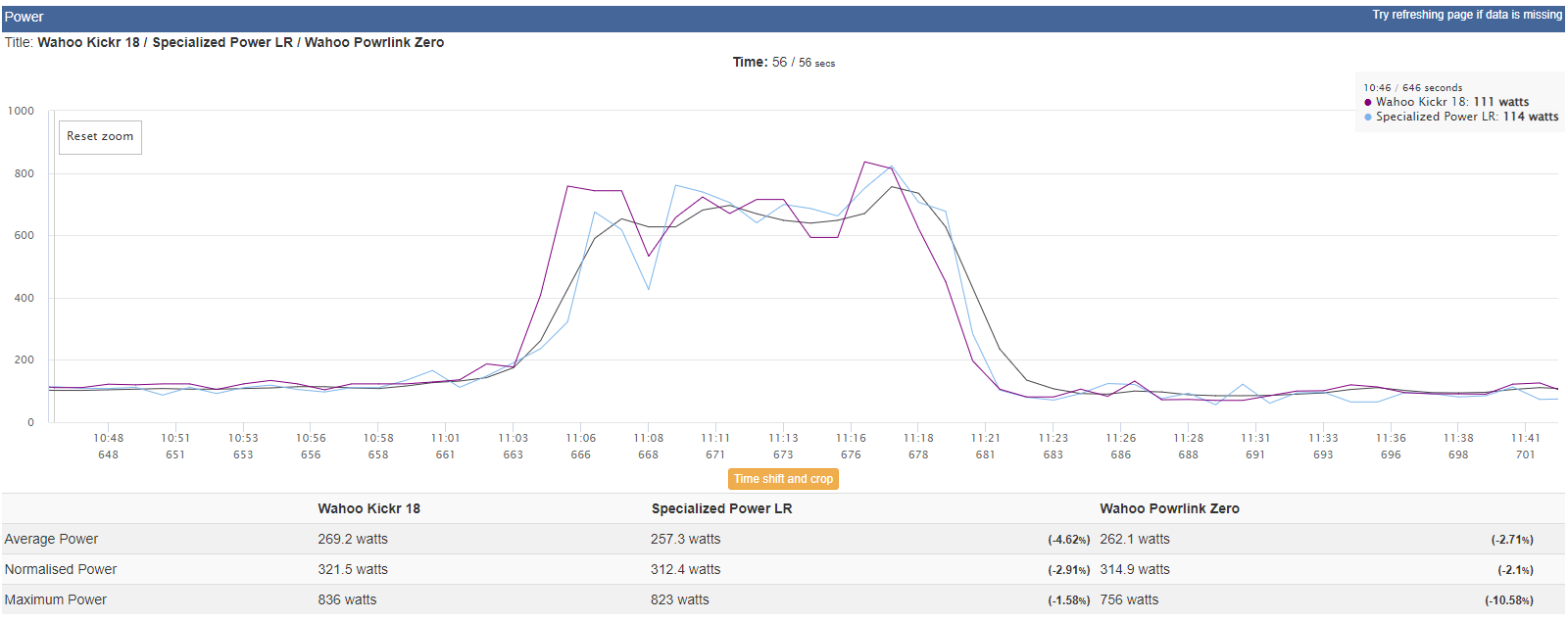
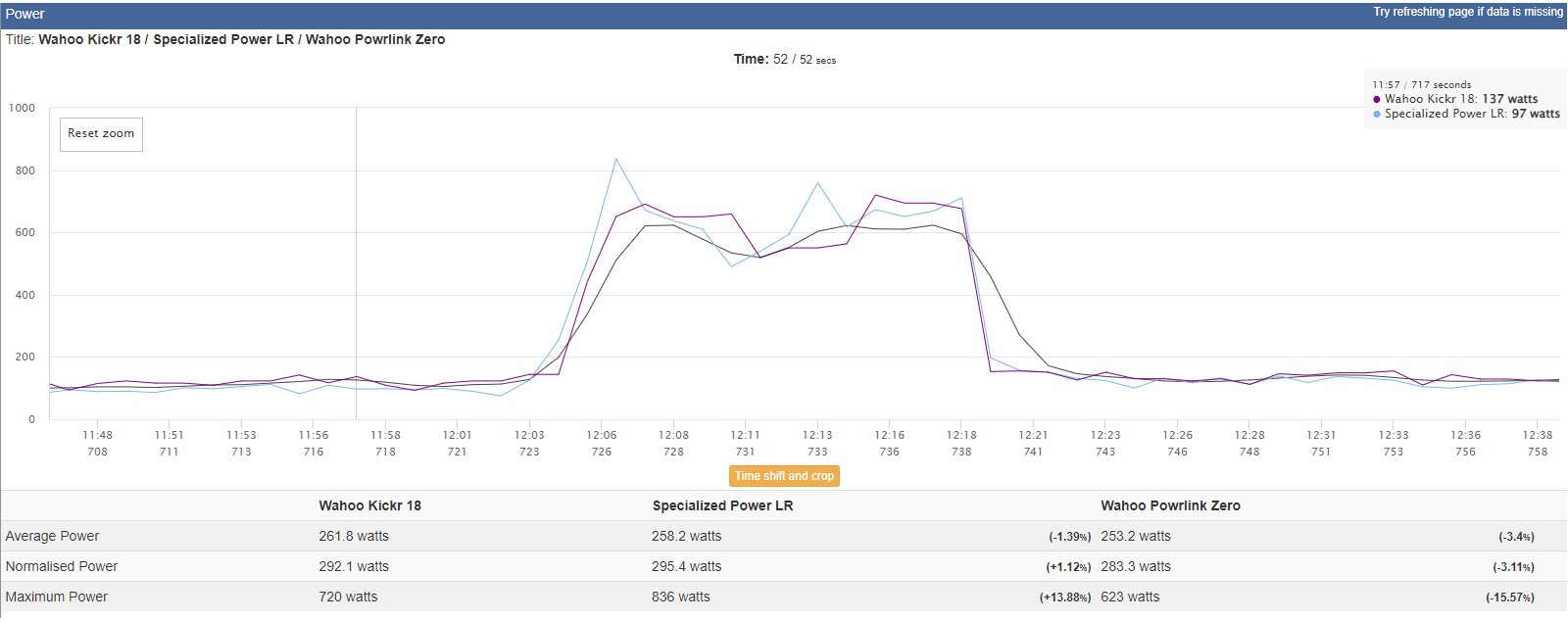
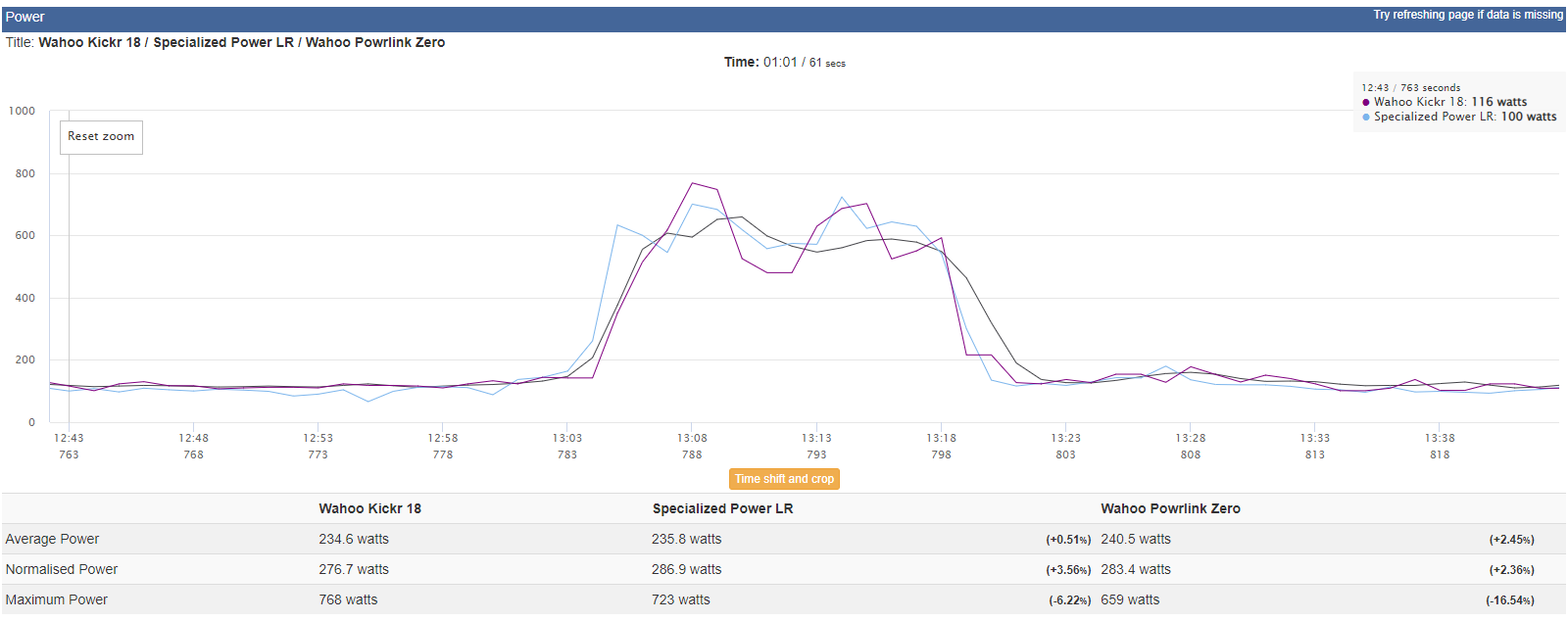
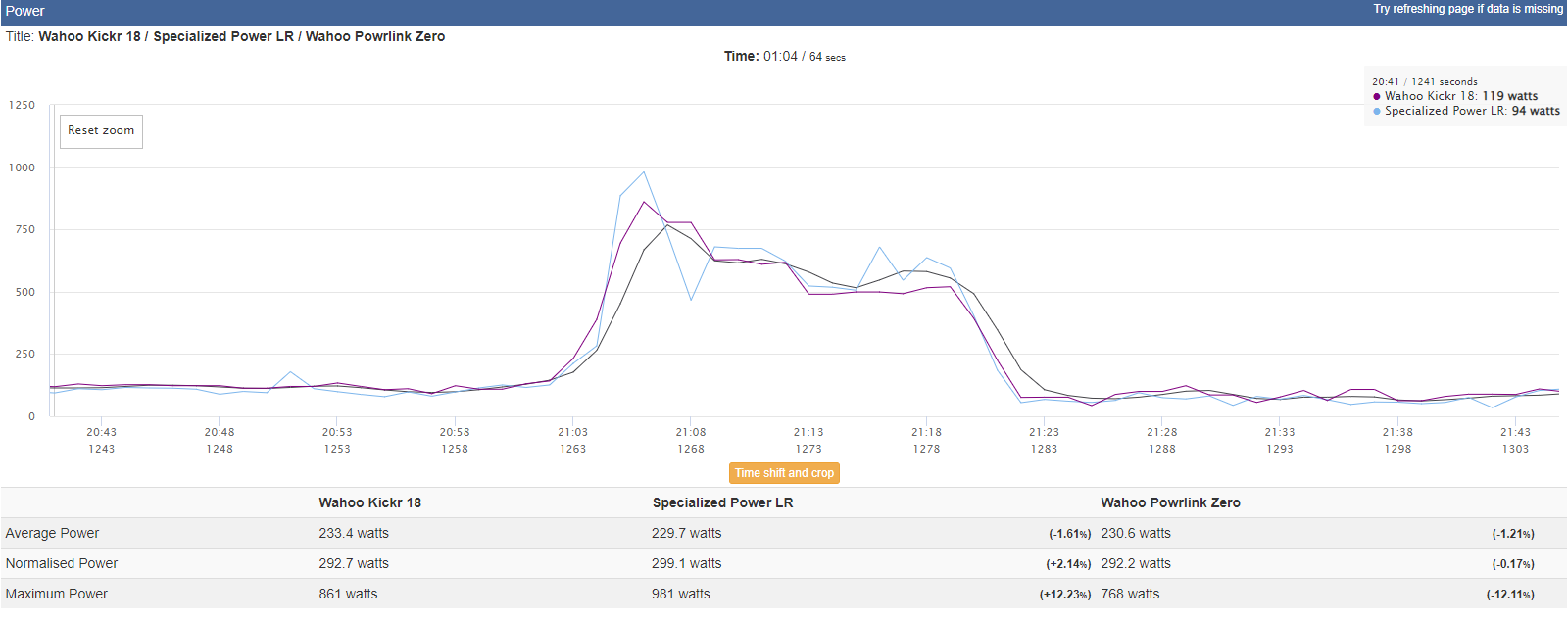

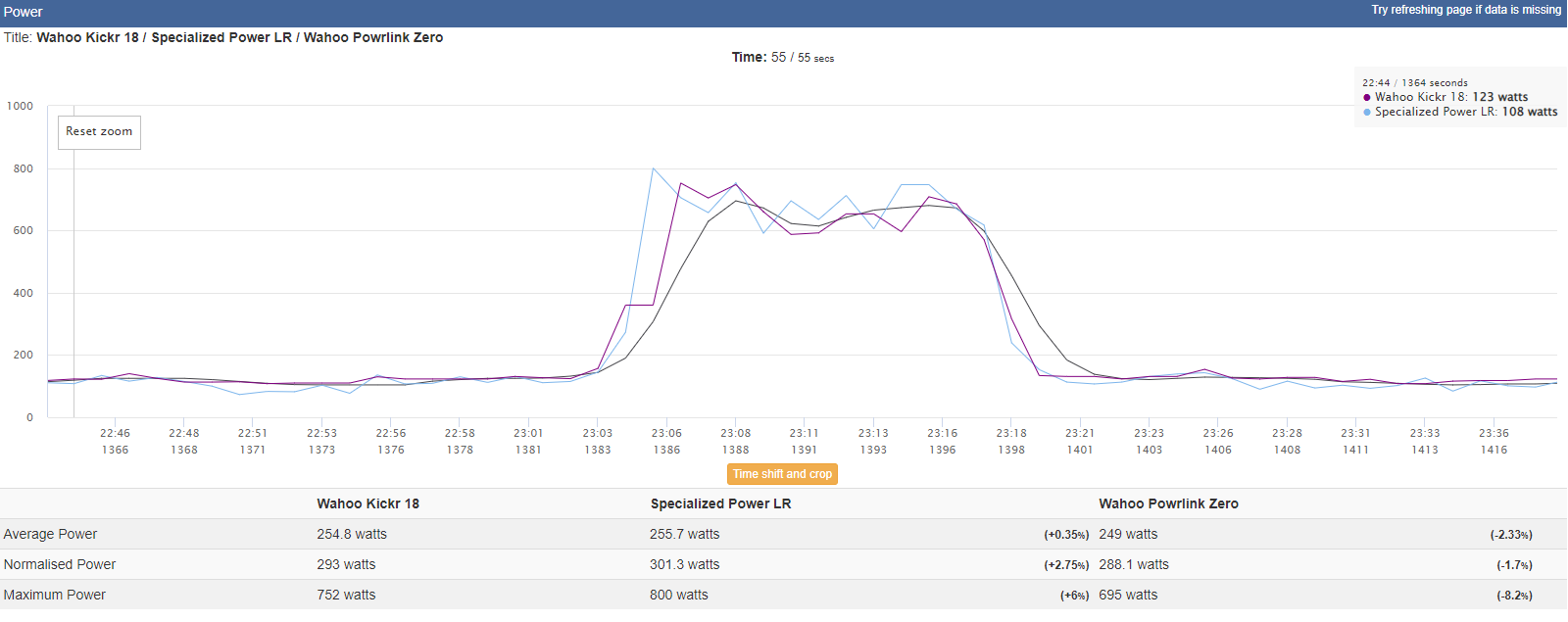
Just like the previous workout, the numbers on the workout depicted above read lower than the two control power meters.
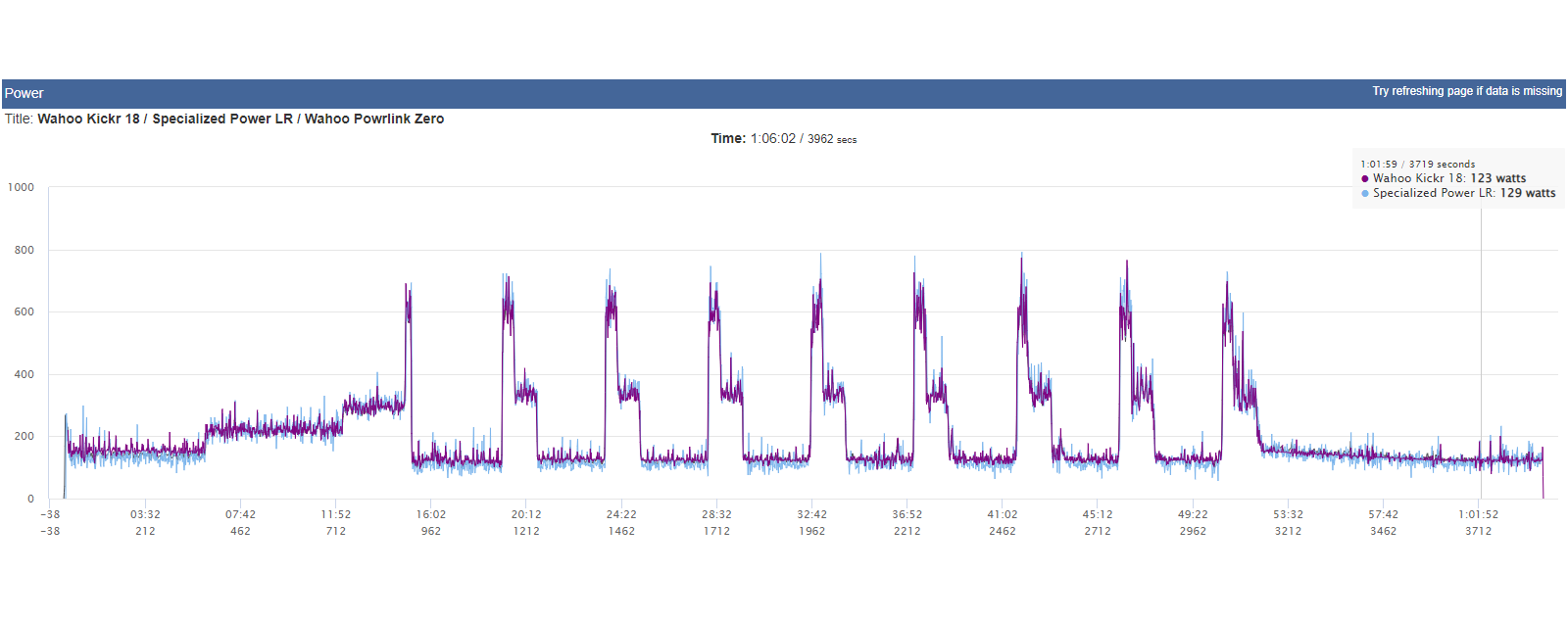
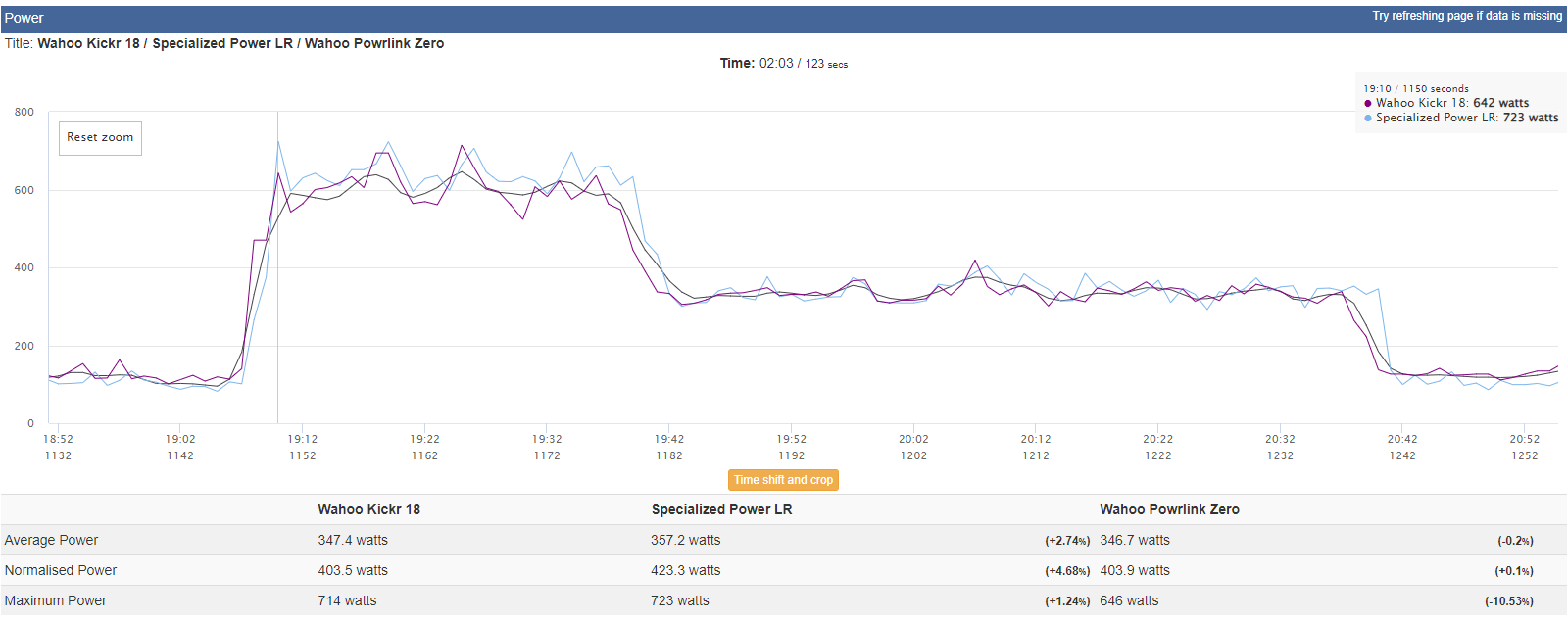
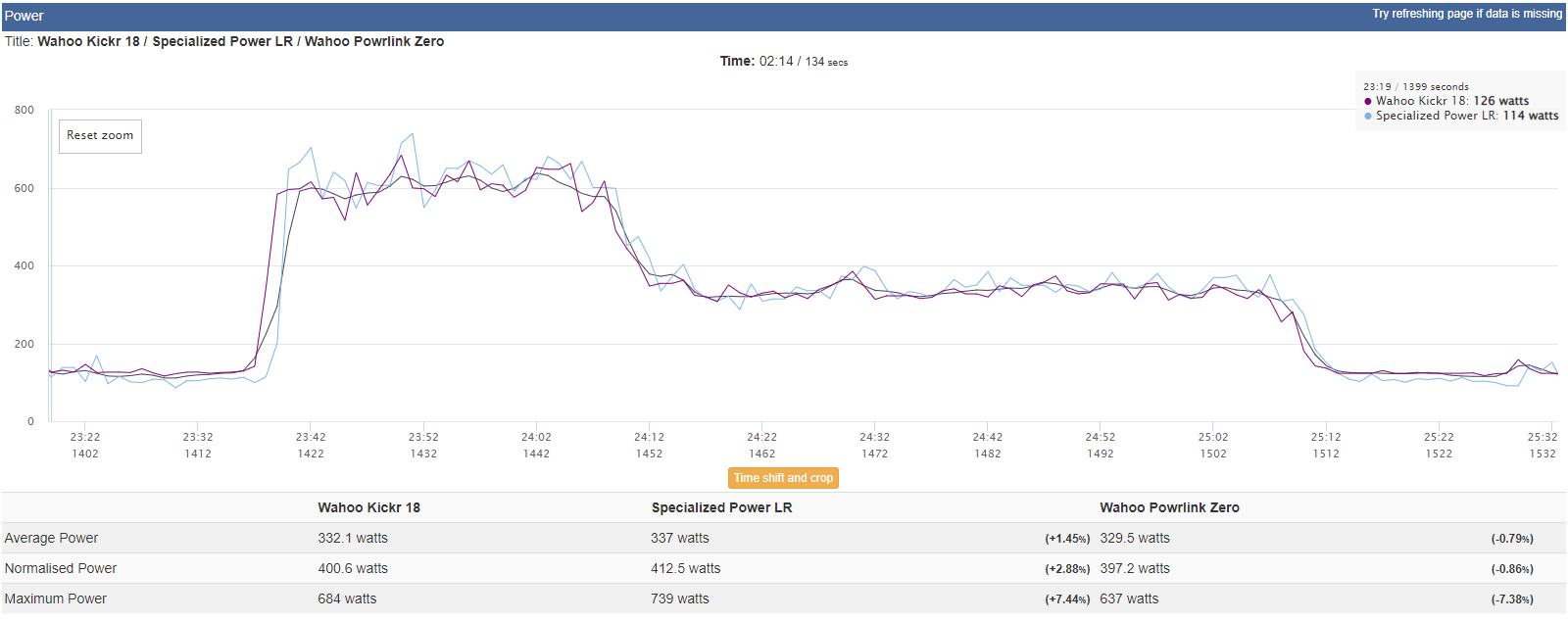
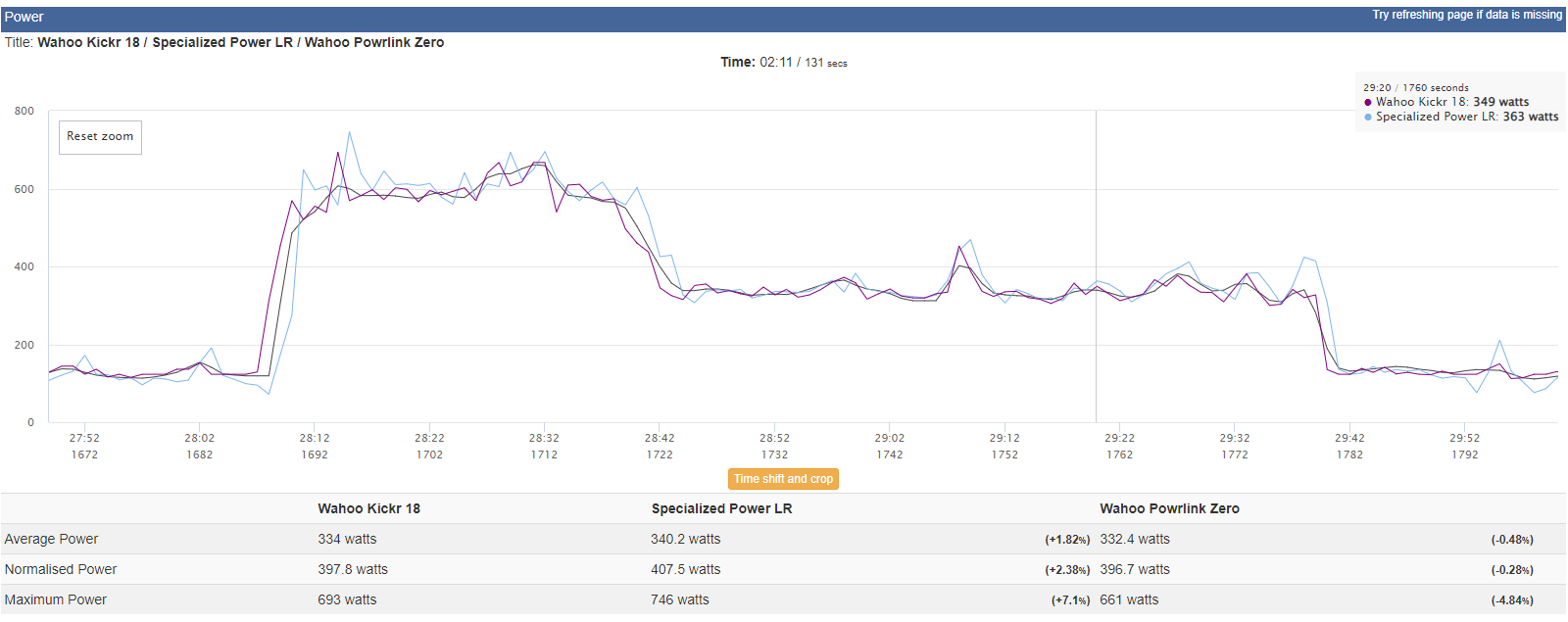
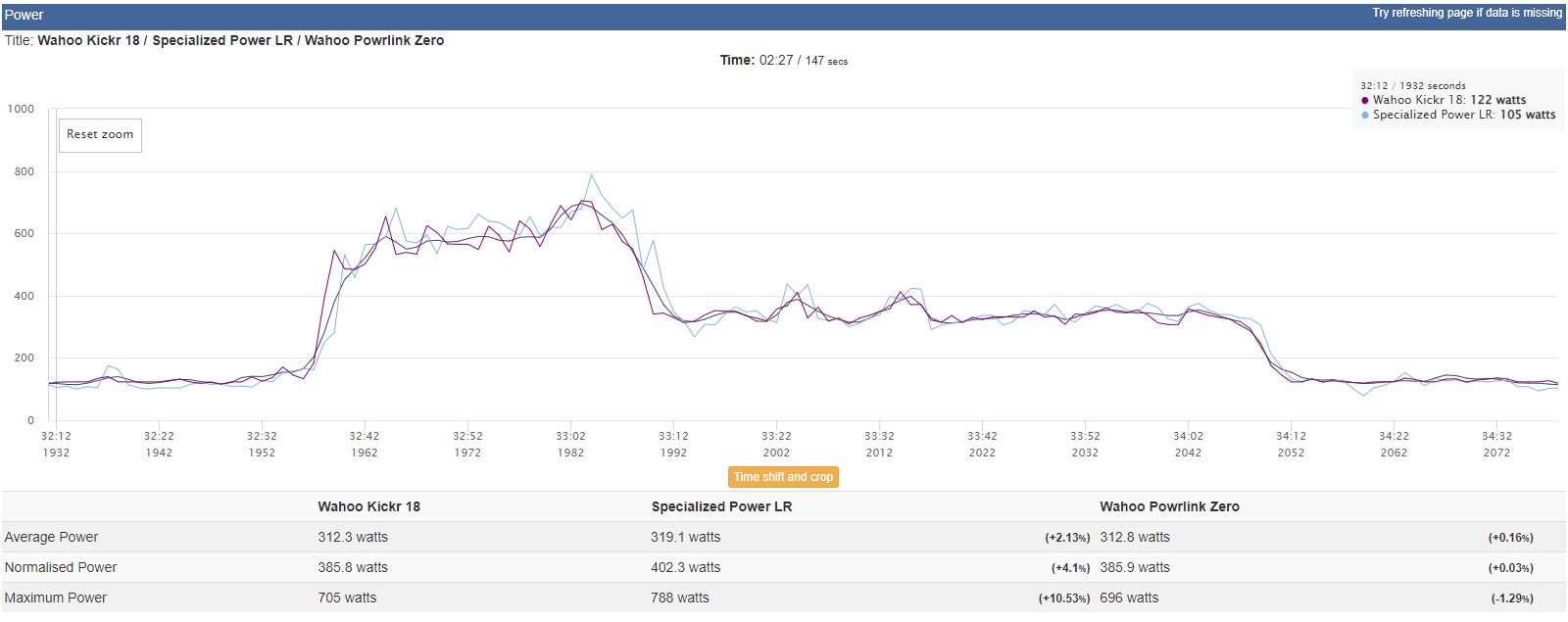
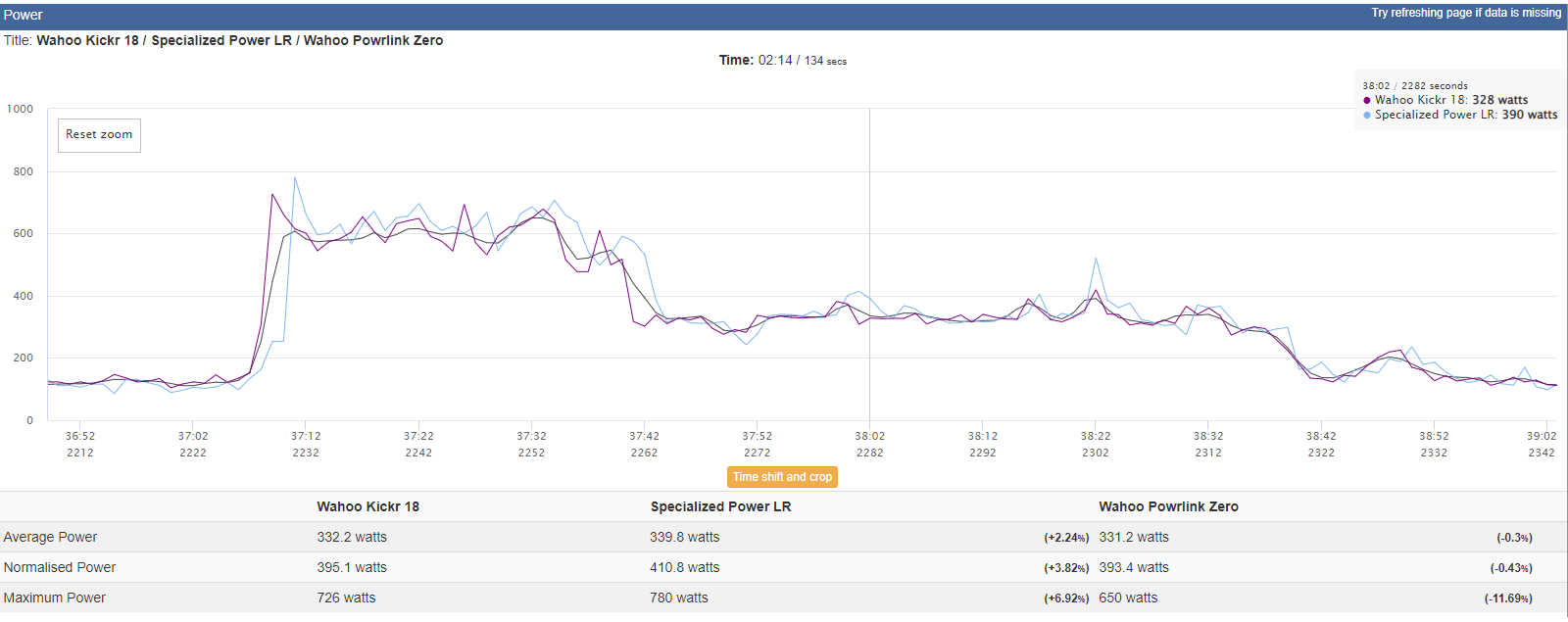
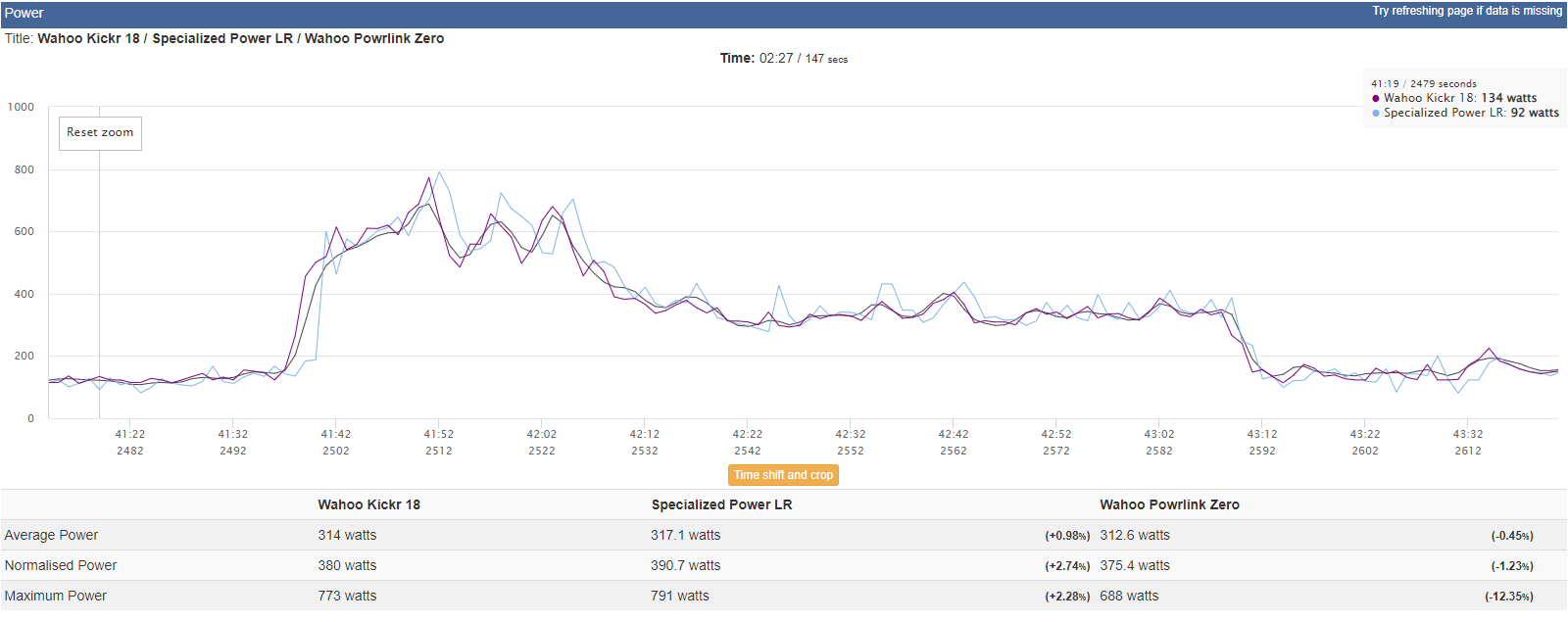
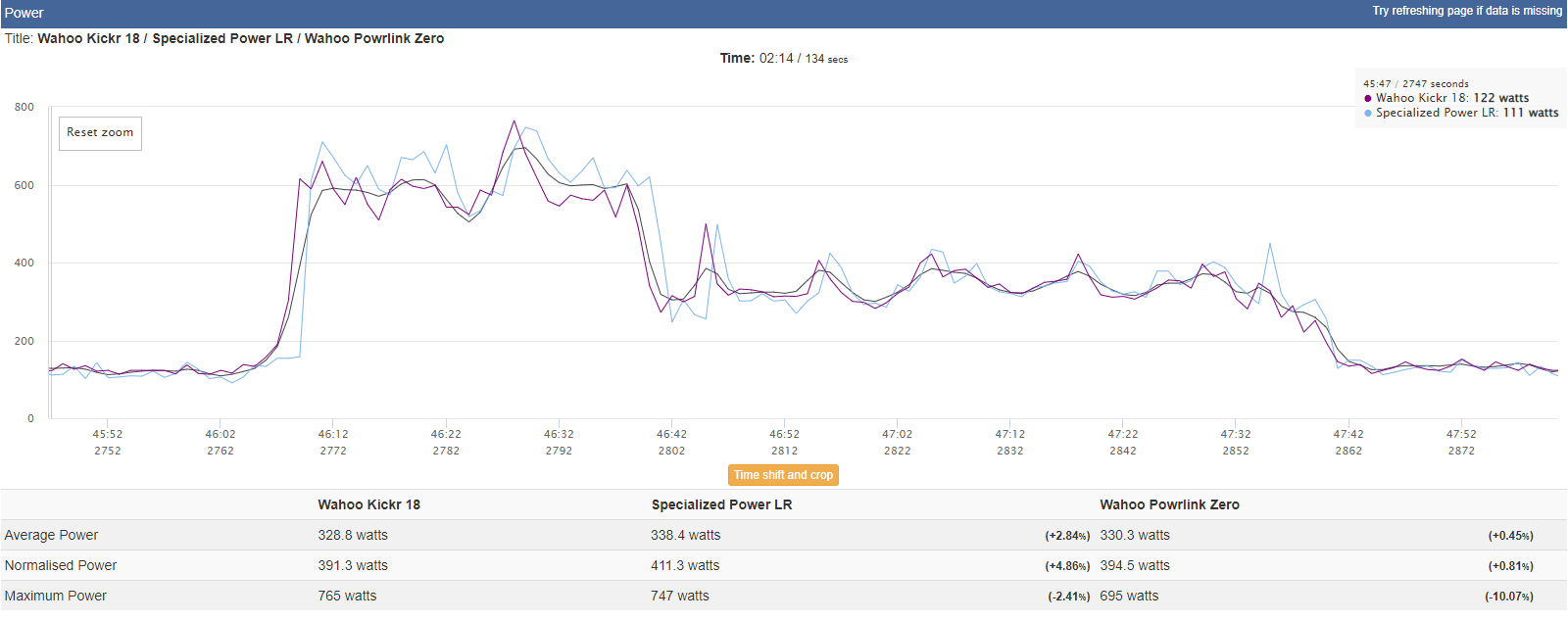
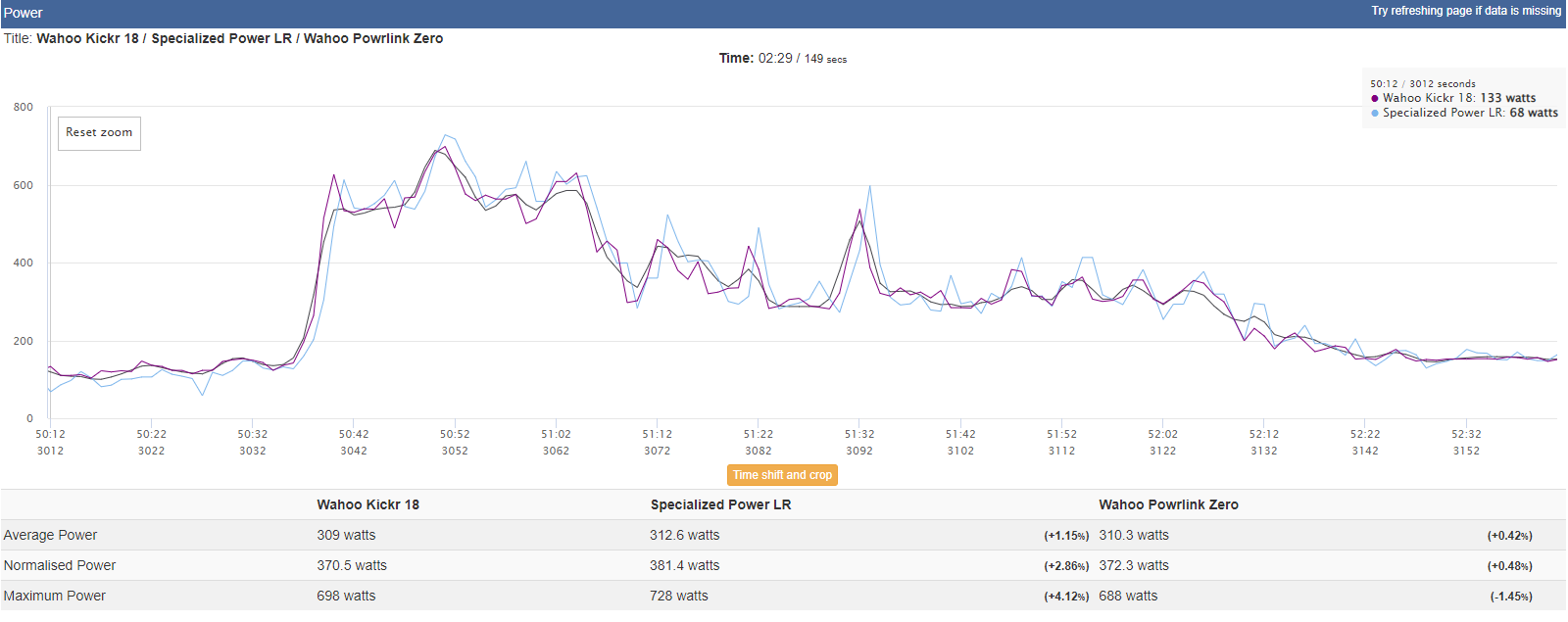
To summarise my findings. It looks as though Powrlink Zero smooths the power reading, which flattens any spikes and lowers the peak power reading.
"POWRLINK ZERO pedals themselves do not smooth the power reading, however, depending on your connected device, you may see power smoothing. POWRLINK ZERO will broadcast power 1x per second" is the official line from Wahoo, and during this testing, I paired the Powrlink Zero pedals with an Elemnt Bolt, an Elemnt Roam and a Hammerhead Karoo 2 computer, which rules out any possibility that the computers are at fault for the low readings.
However, it's worth pointing out that in reality, unless you're training for a sprint and want to track your peak power, or you're racing on Zwift and need every watt you can get in a sprint, this shouldn't negatively affect your experience of the Powrlink Zero pedals.
Should I buy the Wahoo Powrlink Zero power meter pedals?
With that aside, the main question is going to be whether these are a better buy than Garmin or Favero. Given the assumption that all three do in fact offer equally accurate and reliable power measurement, I believe the decision will come down to the following:
Price: As shown in the table above, Favero wins out here by a strong margin.
Ease of use: I've never used a Wahoo product that isn't an absolute breeze to use, and the Powrlink pedals have been no different.
Cleats and feel: Cyclists rarely follow certain teams in the same die-hard fashion that football fans do. Instead, we live and die by our choice of cleats. Ok, maybe not to that extreme, but once we've chosen one, very rarely will we swap. It's a faff, it costs money, it feels unnatural, and if you own multiple pairs of shoes or multiple bikes, the costs grow even higher. If you're using Shimano or Look pedals, then the Speedplay pedals are going to need to really impress in order to convince you to swap. Personally, I'm a fan of the Shimano SPD-SL platform: the tactile snap of clipping in is great, and the wide, secure foothold it offers is just that: secure. I don't get that same feeling with Speedplay pedals, and while they do still hold my foot during as hefty a sprint as I can muster, they feel less secure and the off-axis roll is increased. They do, however, offer the ability to clip into both sides, and that will be enough to convince a lot of riders to give them a try.
Durability: Short of needing to lubricate your cleat spring, there's very little to be maintained with a Wahoo Speedplay pedal, however, the same can be said for the competition.
Customer service: Wahoo Powrlink Zero pedals are backed by a two-year warranty. Likewise Garmin Rally and Favero Assioma.
Verdict
Wahoo Powrlink Zero pedals benefit from the incredibly smooth user experience that Wahoo has pretty much built its brand on, so from a setup and pairing perspective, I'd put them right at the top of the pile. However, Speedplay cleats take more time to set up correctly, and in my opinion, the clip in feel isn't as locked in as you get with Shimano SPD-SL and Look Keo. This is personal preference, of course, and many riders will disagree, especially given you can clip into both sides of the pedal, and that the Speedplay cleats offer more in terms of adjustability.
In my testing, the power accuracy seems perfect for steady efforts, but falls a little short on peaks and sprints. However, be reassured that Wahoo will look after you should you have an issue.
As for whether I'd recommend someone buy them, the answer is 'it depends':
If you're trying to get a power meter on a budget, then there are certainly cheaper options available. Not least in crank-based options, but even within the pedal-based systems, Favero's Assioma pedals are considerably less expensive.
If you want versatility across road, gravel and mountain biking, then the Garmin Rally is probably a better choice, since it allows you to swap the internals across multiple pedal bodies. Alternatively, a spider-based system such as Rotor's InSpider might also fit the bill.
However, if you value the seamless user experience that comes with buying into the Wahoo ecosystem, you want the benefit of being able to clip into both sides of your pedals or want to be able to adjust your cleat float at the turn of a screw, then the Wahoo Powrlink Zero is the choice for you.
Tech Specs: Wahoo Powrlink Zero Dual-sided
- RRP: £849.99 / $999.99 / €999.99 / CAD$1,299.99 / AUD$1,499.95
- Weight: 276g (actual, 138g per pedal)
- Measurement: Dual-sided
- Battery life: 75+ hours
- Battery type: Rechargeable lithium-ion
- Accuracy: +/- 1 per cent
- Cleat system: Speedplay

Josh is Associate Editor of Cyclingnews – leading our content on the best bikes, kit and the latest breaking tech stories from the pro peloton. He has been with us since the summer of 2019 and throughout that time he's covered everything from buyer's guides and deals to the latest tech news and reviews.
On the bike, Josh has been riding and racing for over 15 years. He started out racing cross country in his teens back when 26-inch wheels and triple chainsets were still mainstream, but he found favour in road racing in his early 20s, racing at a local and national level for Somerset-based Team Tor 2000. These days he rides indoors for convenience and fitness, and outdoors for fun on road, gravel, 'cross and cross-country bikes, the latter usually with his two dogs in tow.
